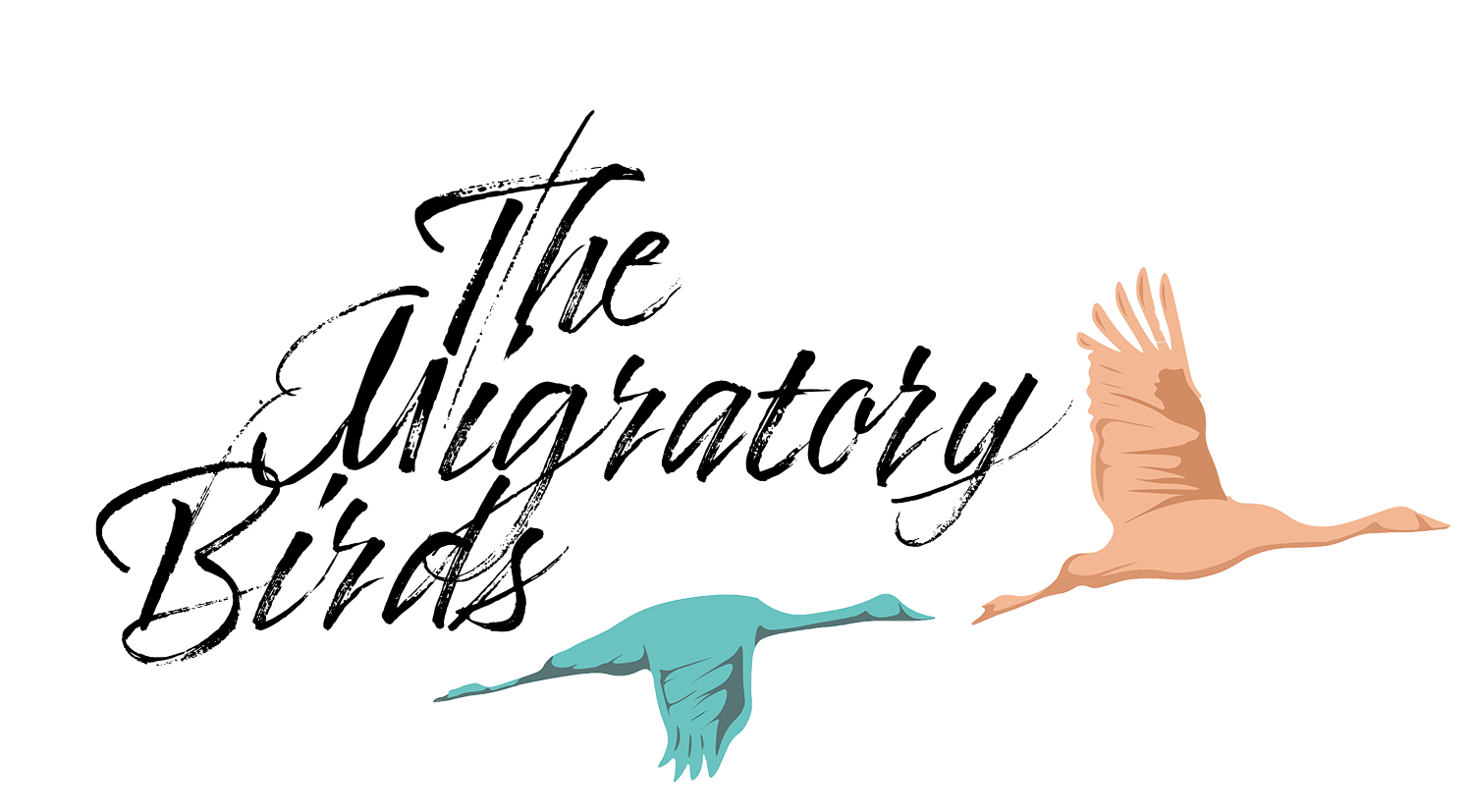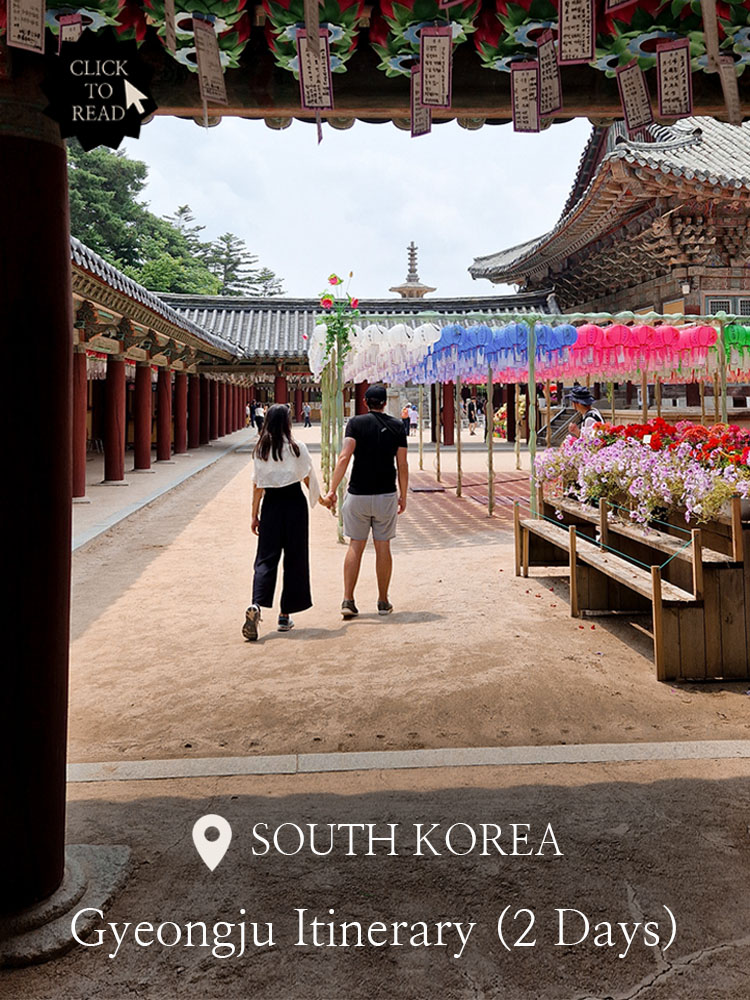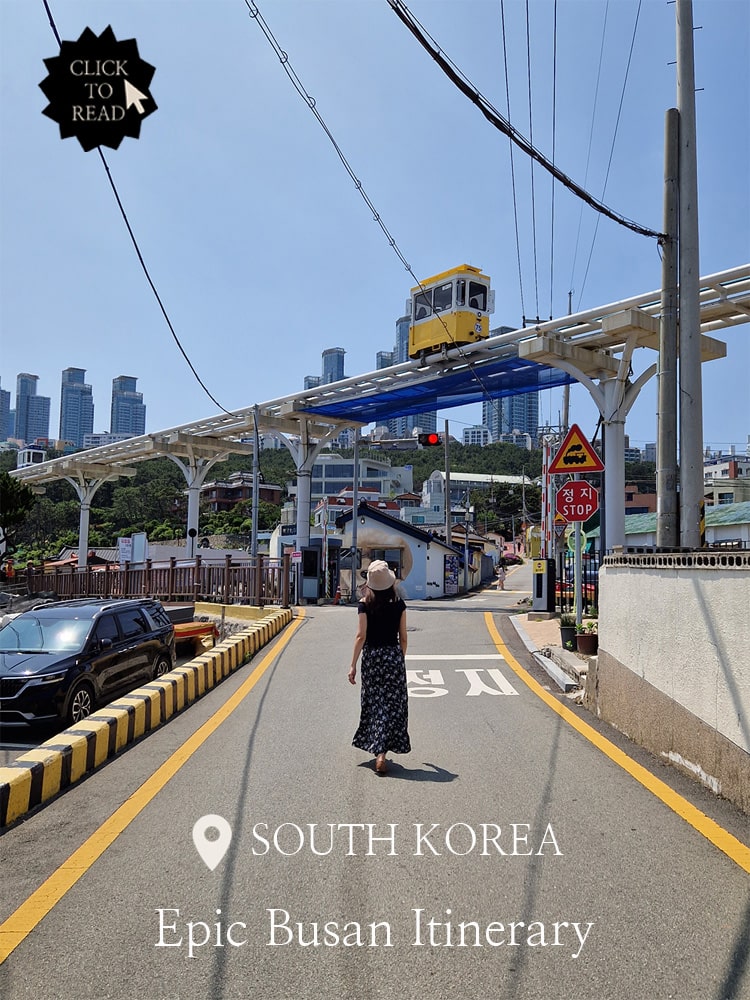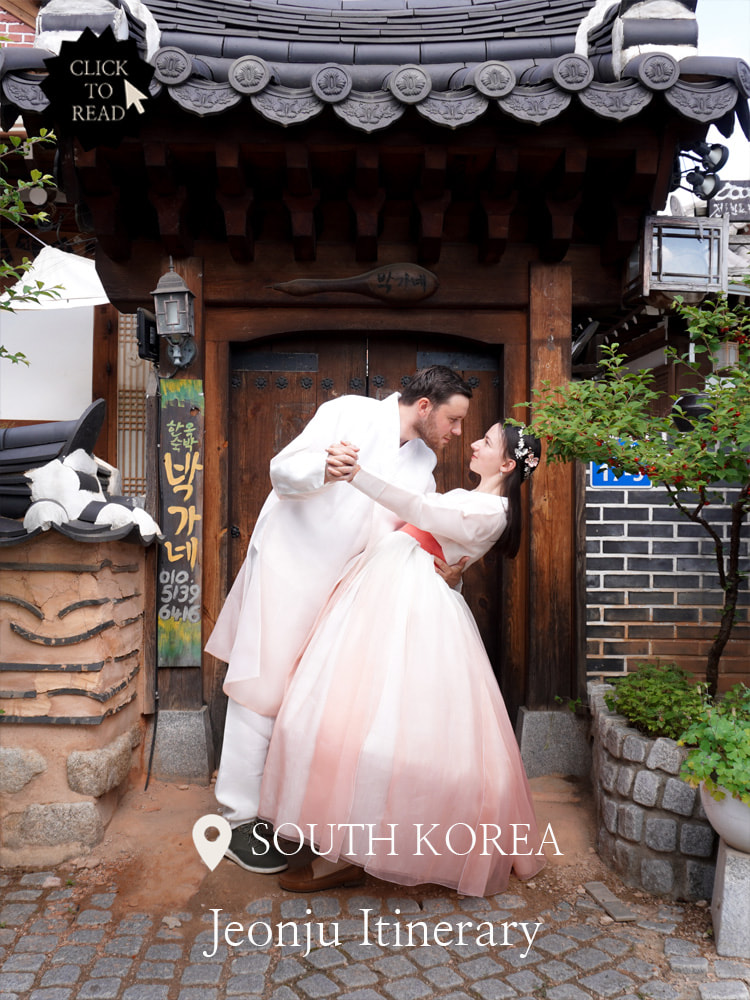20 Amazing Free Things to Do in Seoul
Sightseeing in Seoul, and South Korea in general, actually doesn’t have to be expensive at all. In fact, a lot of the major attractions and most intriguing things to do in Seoul are completely free of charge! In this sightseeing guide, we are going to share some of the best free attractions in all of Seoul. So, let’s get right into it!
Note: This post may contain affiliate links. By interacting with these links, you can support us and our website at no extra cost to you🍀! Our affiliate links are marked by an *, so you can recognise them in advance. For more information, read our Disclaimer.
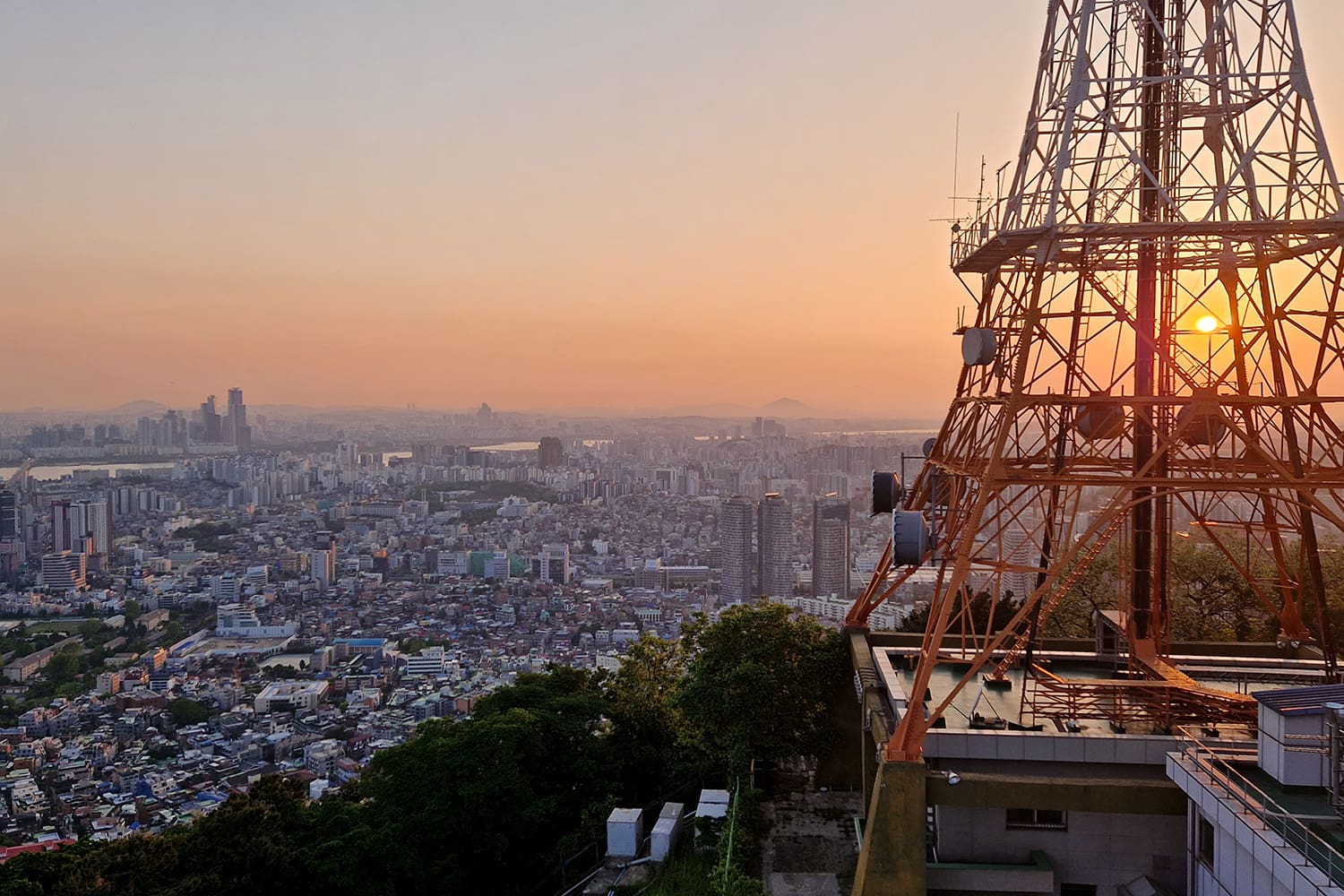
Free Things to Do in Seoul – A Sightseeing Guide to Seoul
When deciding to write this post, we of course knew that Seoul has many free activities. I mean, when we visited, we were on quite a tight budget and therefore super happy that we did not have to pay for much in terms of sightseeing.
However, as I am sitting here and actually typing out this list of all the free sights and activities in Seoul, I realise just how much is actually free – including most of Seoul’s MUST-DO attractions! Truly you can easily spend several days in Seoul, exploring all over the city and not pay a single cent on entrance fees!
In this post we share our top 20 free things to do in Seoul. Do note that the items on this list are in no particular order or ranking. However, we did try to group the sights and activities somewhat by area.
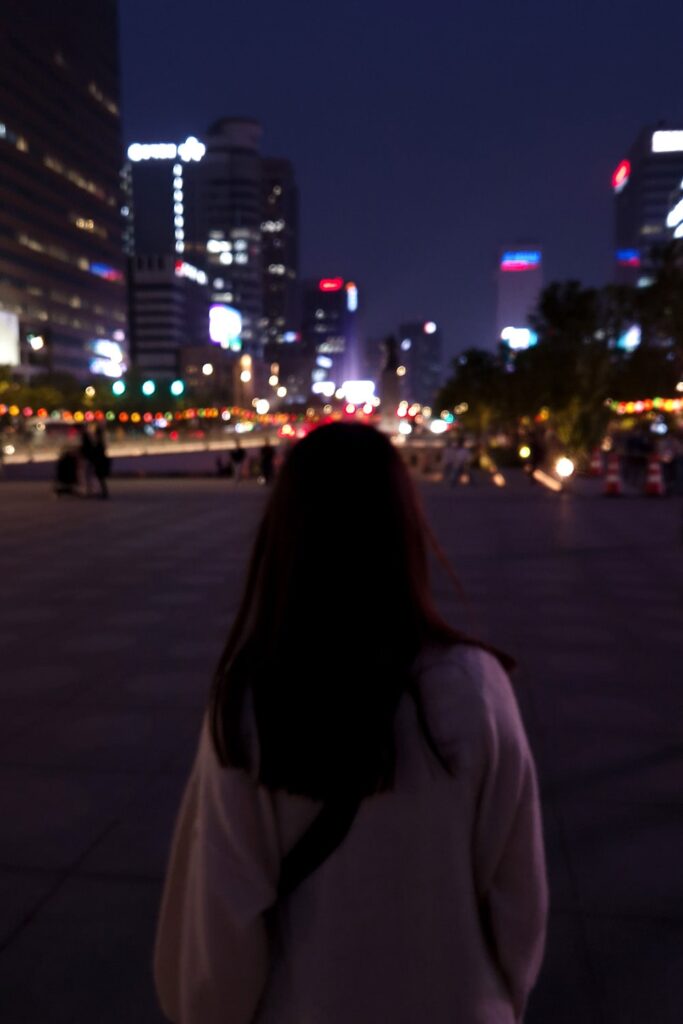
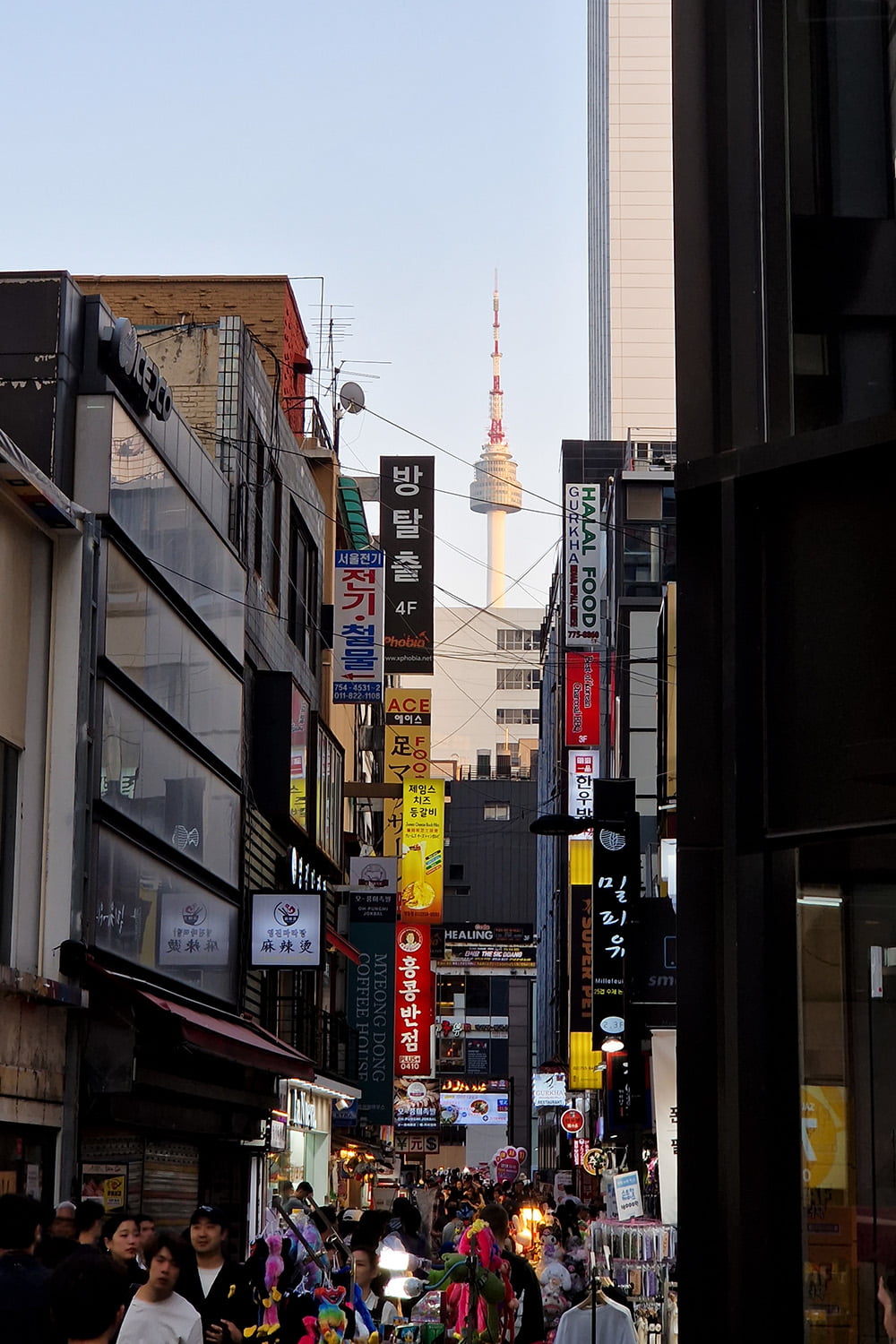
Are you currently planning your next trip to South Korea? Then, check out:
1. Explore Bukchon Hanok Village
Bukchon Hanok Village is a residential area in Seoul that decided to preserve its traditional Hanok houses and thus became quite a popular tourist attraction. It is usually listed among the Top 5 things to do in Seoul. And, since exploring the Hanok village is free, it should not come as much of a surprise that it made this list as well😆.
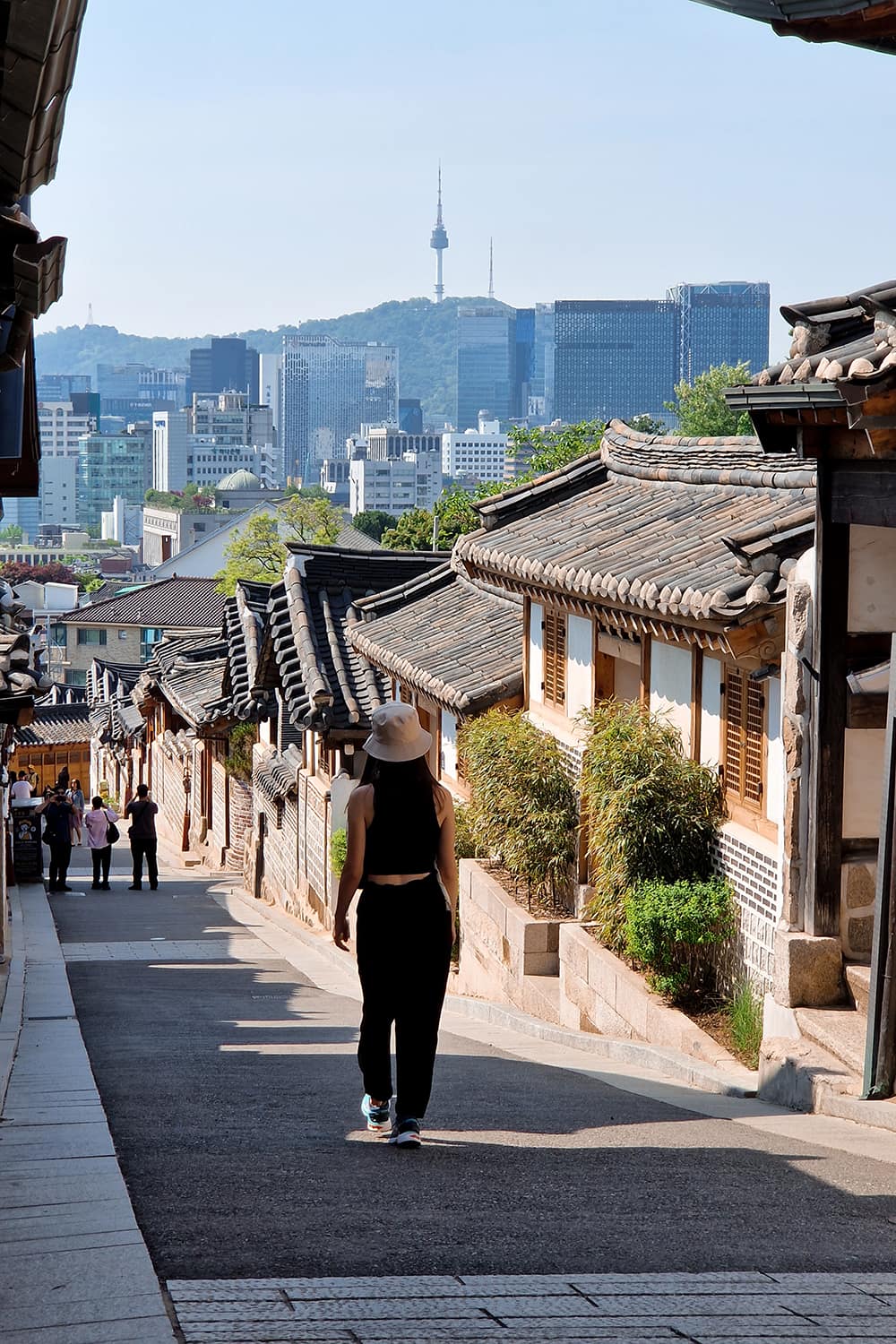
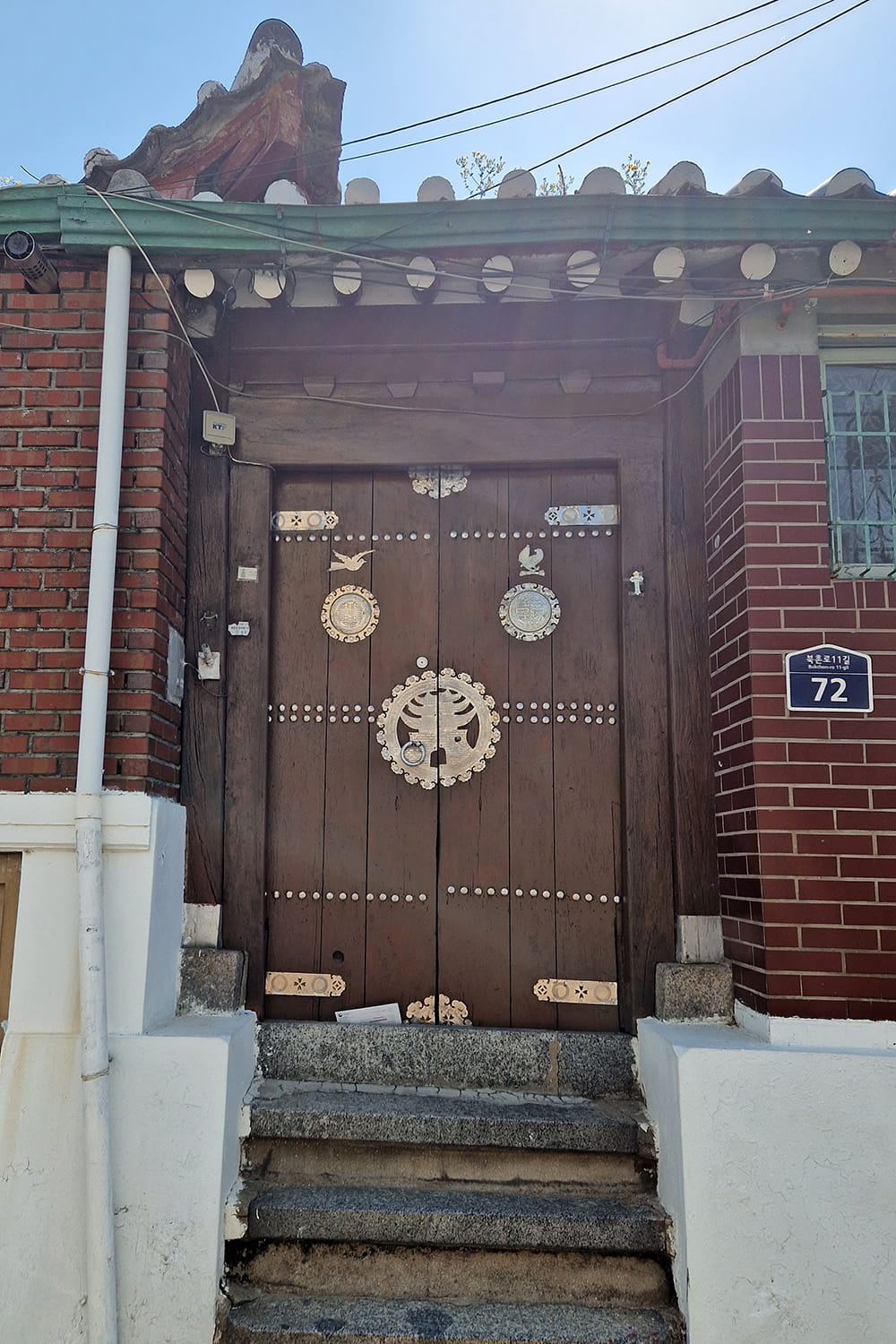
What to do in Bukchon Hanok Village
📷 Stroll around and take pictures. The main thing to do in Bukchon Hanok Village is simply to stroll around, soak in the views and take pictures.
🌟 Bukchon Yukgyeong. Probably the most famous street in Bukchon. This is where you'll get the stunning street shot with a view of Seoul (and Seoul Tower) in the background!
🏠 House of Baek Inje. Get a glimpse of what Hanok look like from within!
🎨 Bukchon Traditional Crafts Center. Come here to participate in one of many workshops that take place each day of the week. Click here for the program. Note: The workshops are not free though, most will cost between 10.000 - 20.000KRW per person, however it is such a unique experience we had to include it.
☕ Visit a café. There are numerous cafés located throughout Bukchon Hanok Village, most with quite stunning interiors. Our pick is Greenmile Coffee Bukchon, one of the few that open already at 9 a.m. (during the week).
Note: Since Bukchon Hanok Village is a residential area, a lot of the Hanok are privately owned and lived in and therefore off-limits to tourists. When visiting the Hanok Village, make sure to always stay mindful of its residents, i.e. no loud talking or trespassing!
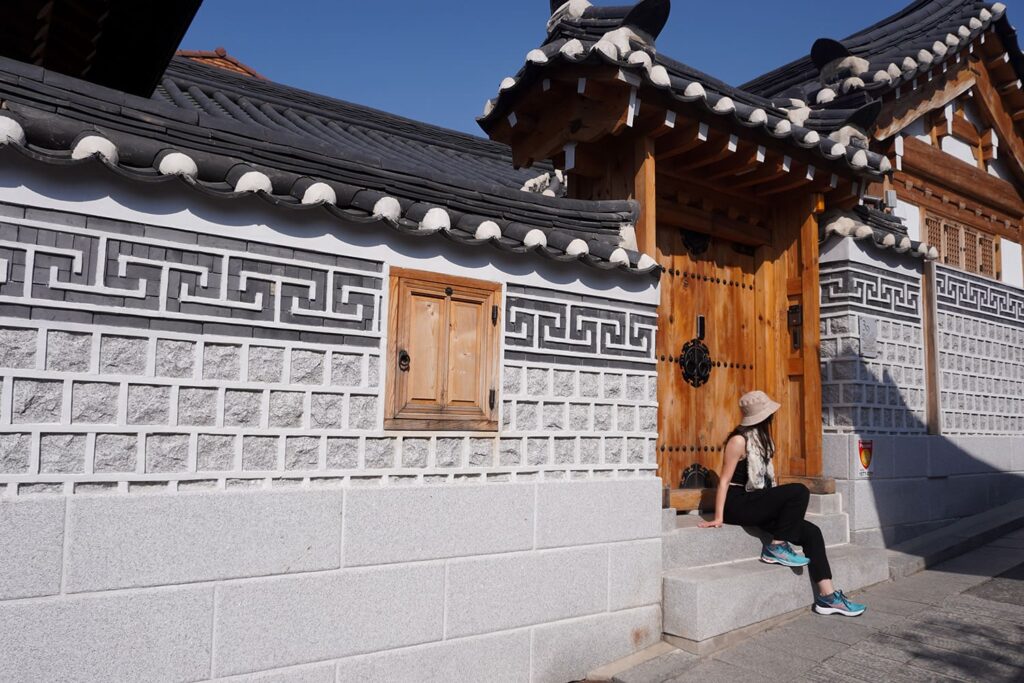
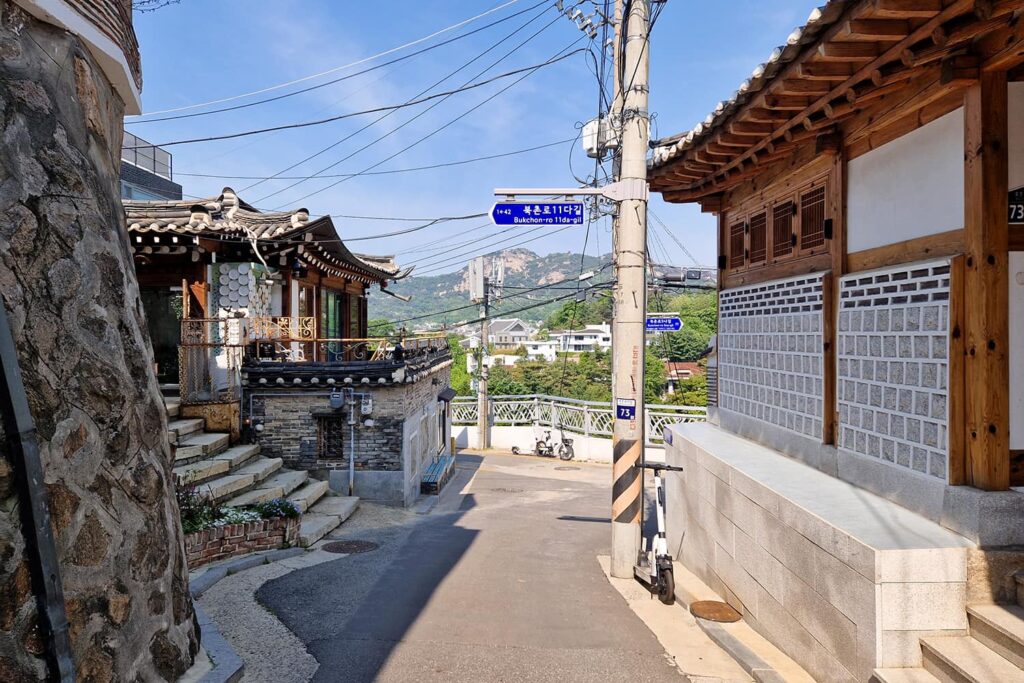
How to get there? The closest metro station is Anguk Station (Seoul Metro Line 3). Follow Buckchon-ro Road until you reach the entrance to Bukchon-ro 11-gil. If you follow the latter you will reach Bukchon Yukgyeong. The Hanok Village itself is more widespread though, so simply stroll around the whole area for a bit.
2. Marvel at Gwanghwamun Gate & Square
Gwanghwamun Square is the gigantic square that is located right in front of Gyeongbokgung Palace, which is probably the most well known of the palaces in Seoul among tourists. Gyeongbokgung Palace itself is not free (although the entrance fee is only 3.000KRW) – except if you are wearing a Hanbok, but more on that at the end of this post.
In case you are not interested in visiting the palace itself, the massive gate leading to the first big courtyard of the palace, can actually be entered for free. Gwanghwamun Gate is also where you’ll see the palace guards regularly change station from one side of the gate to the next.
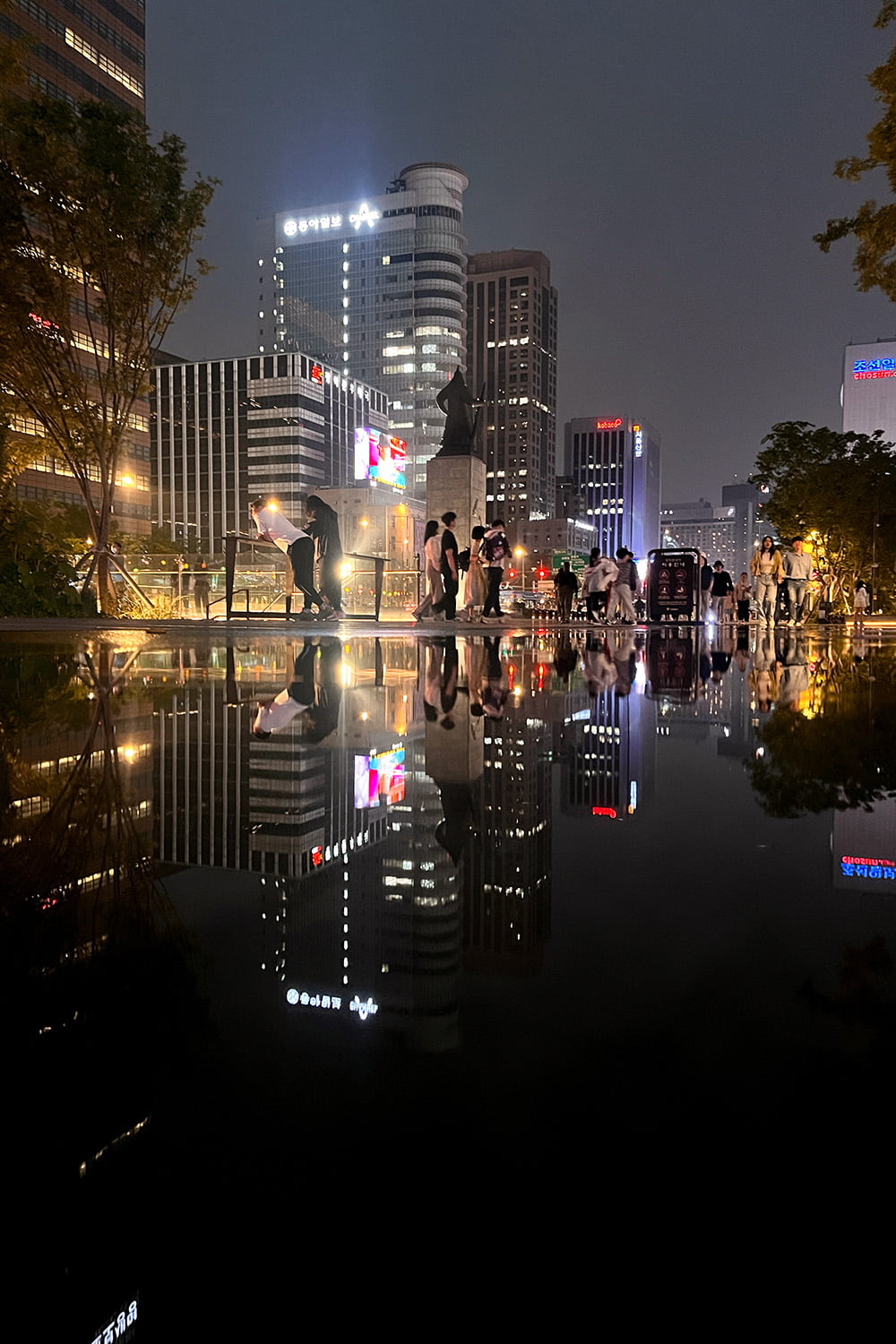
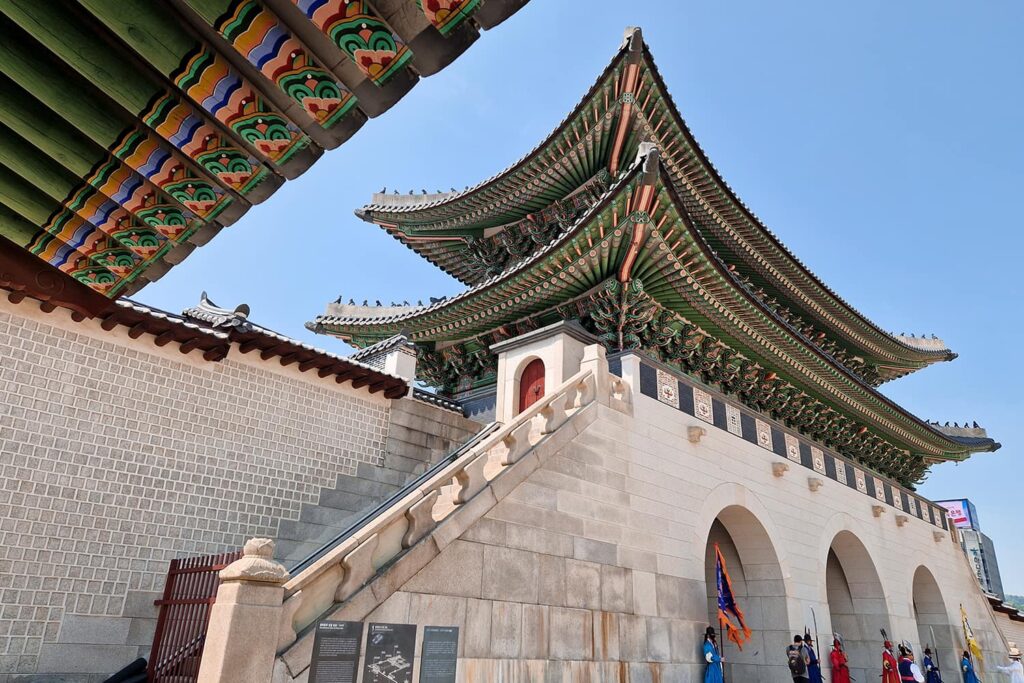
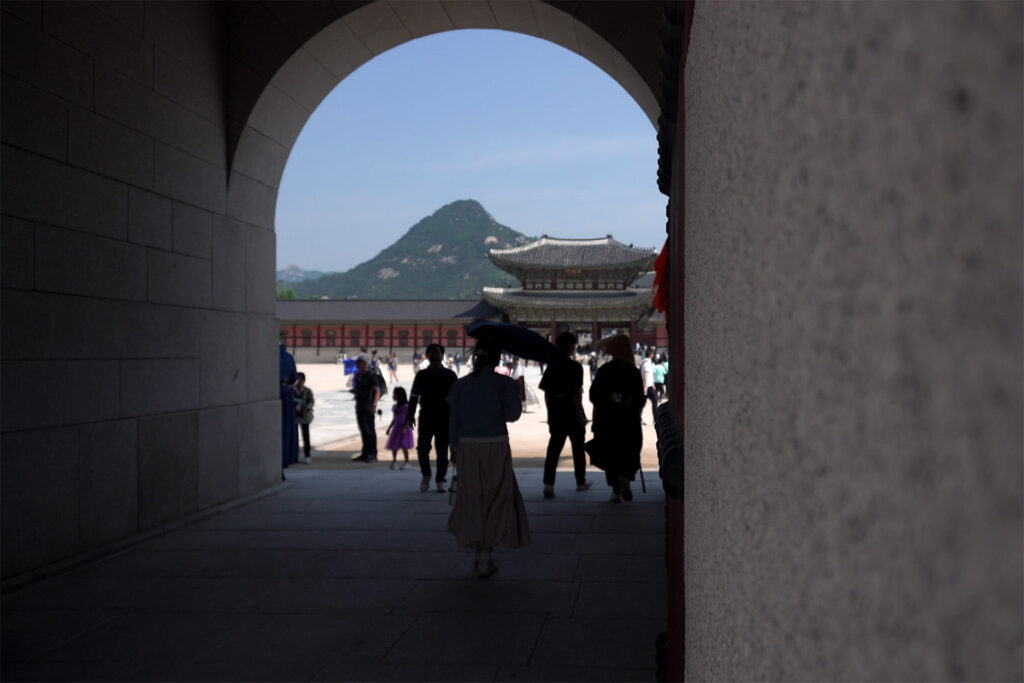
How to get there? The closest metro station is Gyeongbokgung Station (Seoul Metro Line 3), take the station’s Exit 5 and you’ll be right in front of Gyeongbokgung Palace. Note: From Bukchon Hanok Village Gwanghwamun Gate & Square are in walking distance.
3. Walk down Insa-dong Culture Street
Insa-dong Culture Street is a lovely street lined with unique small shops, art galleries as well as a few restaurants and cafés. Compared to other parts of Seoul, this street definitely feels a bit more touristy. Nonetheless, we think it is worth strolling through at least once. We stayed not far from this area and found ourselves wandering here a number of times.
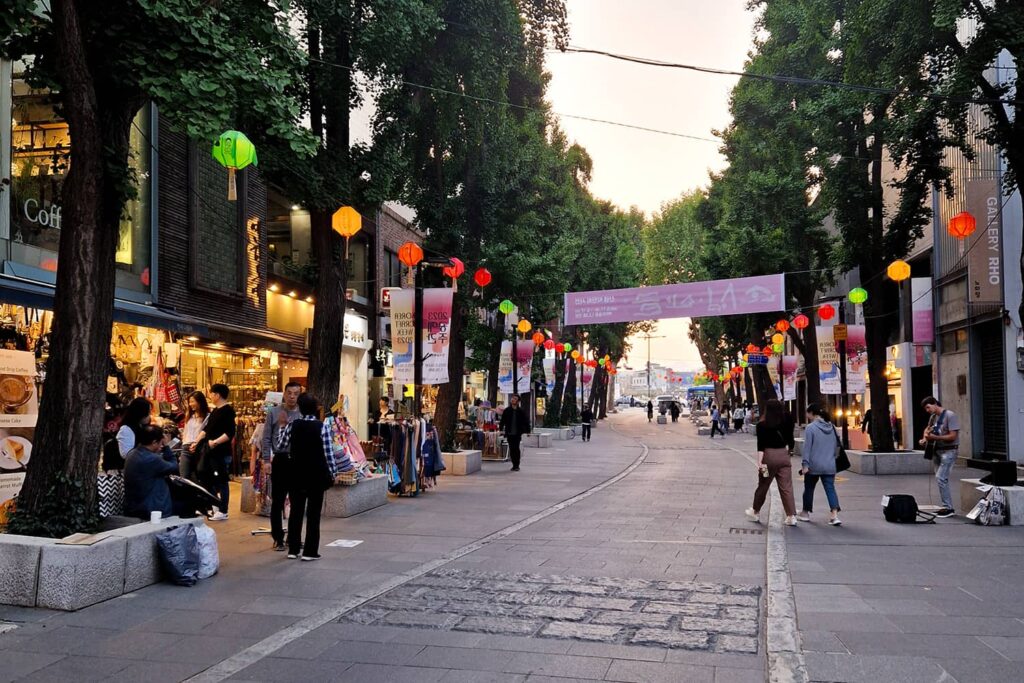
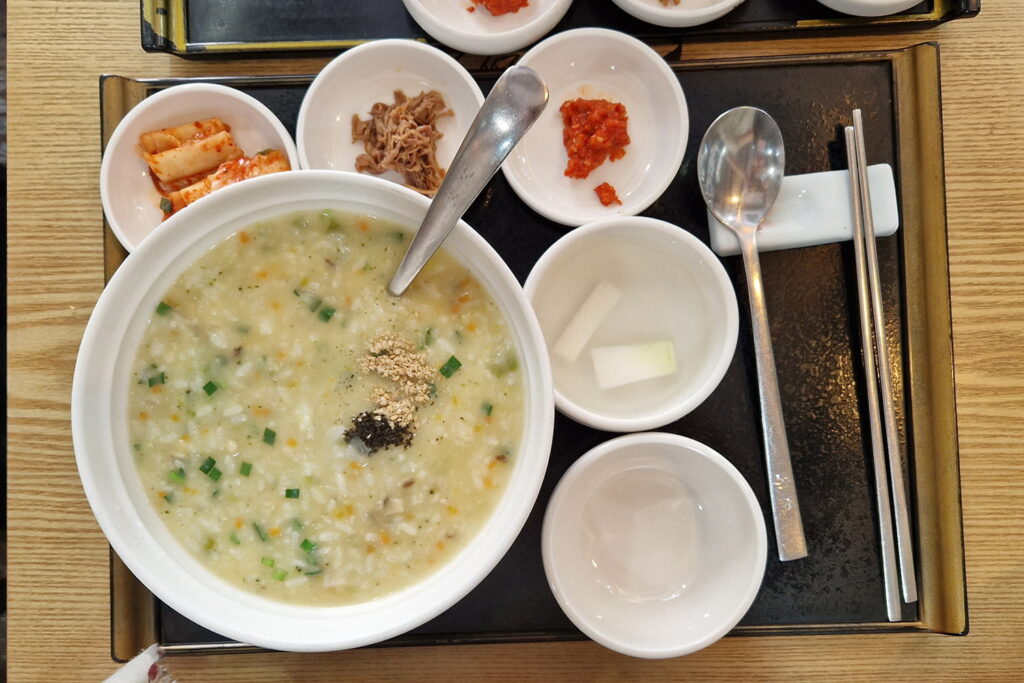
Our tip: If you ever wanted to know what Korean savoury porridge tastes like, head to ‘Bonjuk Insadong‘. For typical Korean desserts look for a café called ‘Mokhyang’ (in one of the side streets)!
How to get there? There are three metro stations close-by: Anguk Station (Seoul Metro Line 3), Jongno 3-ga Station (Seoul Metro Line 1, 3 & 5) and Jonggak Station (Seoul Metro Line 1). Note: From Gwanghwamun Square you can simply walk.
4. Visit Jogyesa Buddhist Temple
Jogyesa Buddhist Temple was founded in the 14th century. Today it is the head temple of the Jogye Order, the largest order of Korean Buddhism. During the celebration of Buddha’s birthday, which usually takes place in May, Jogyesa Buddhist Temple is wonderfully decorated with hundreds of lanterns!
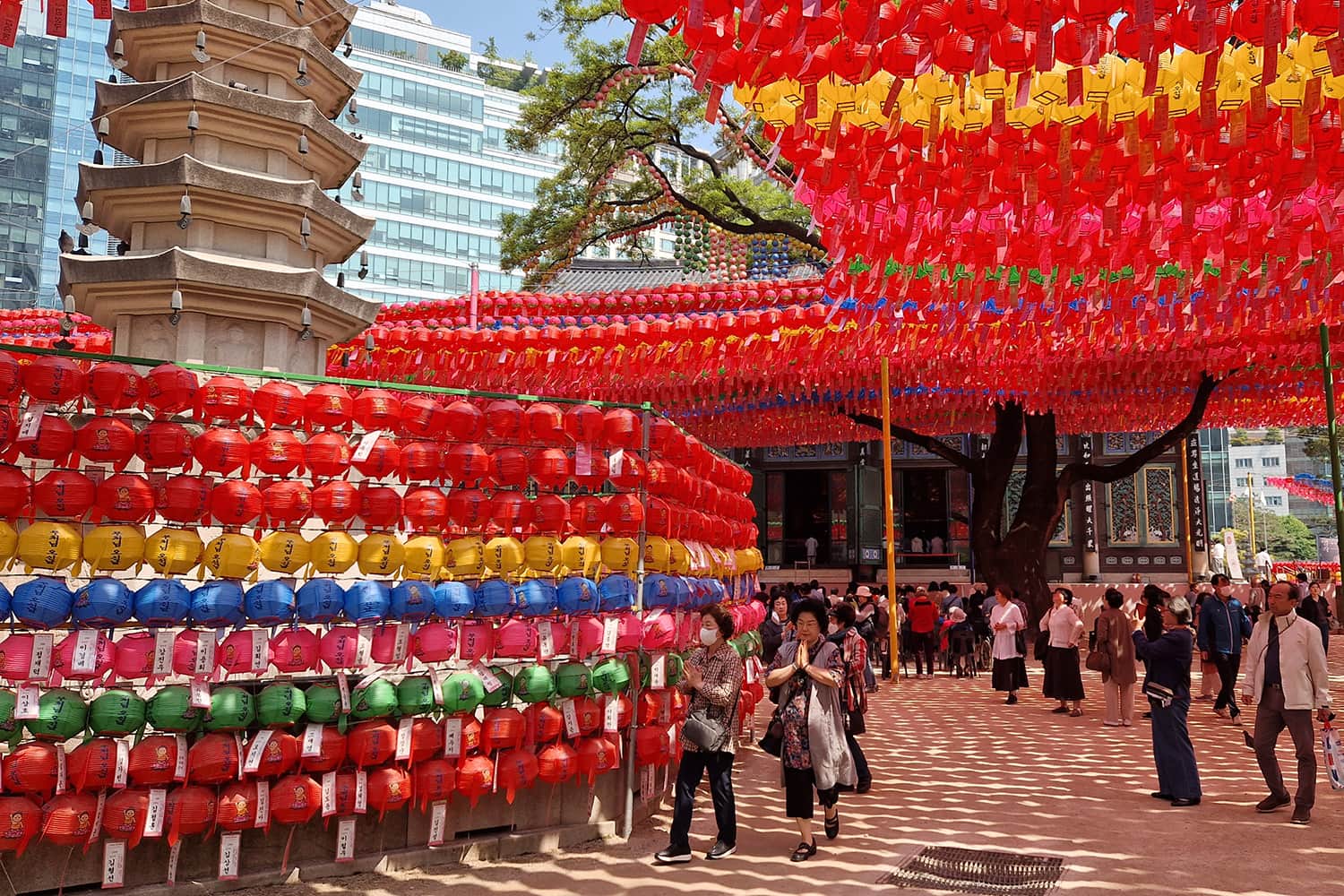
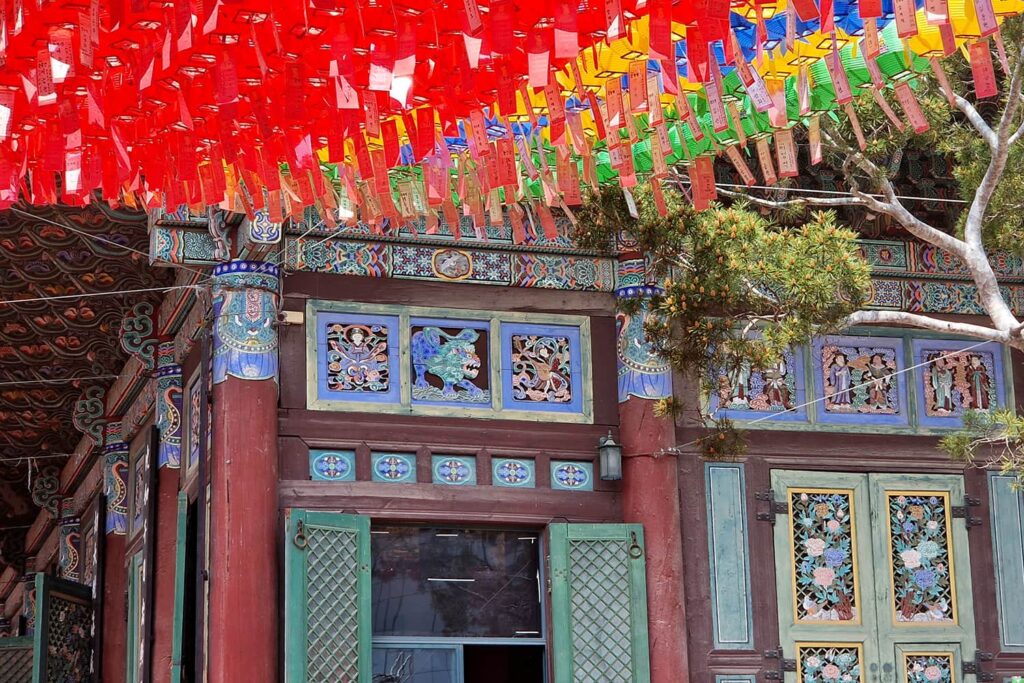
Good to know: Jogyesa Temple is part of the Temple Stay Program, a cultural program that allows tourists to stay at a selection of temples throughout Korea and experience the daily life of Korean monks. Our personal recommendation would be to take part of this program at one of the stunning temples in Gyeongju, however in case you only visit Seoul Jogyesa Temple might be an interesting option as well!
How to get there? Jogyesa Temple is located roughly 200 metres away from Insa-dong Culture Street. In other words, a quick walk away.
5. Explore Ikseon-dong Hanok Village
This Hanok village is quite different from Bukchon Hanok Village in the sense that it is way more commercialised. Where Bukchon Hanok Village is essentially a residential area, Ikseon-dong Hanok Village is filled with mostly restaurants and cafés as well as a few shops. This area is popular among tourists as well as Koreans and gets very busy during evenings and on weekends.
How to get there? The closest metro station is Jongno 3-ga Station (Seoul Metro Line 1, 3 & 5). Look for Exit 3, 4, 5 or 6, those will be the closest exits to Ikseon-dong Hanok Village. Since three metro lines meet at Jongno 3-ga station, the latter is quite big.
6. Go on a quest to spot the murals in Ihwa-dong Mural Village
‘Another Village?’, you may ask. Well, yes! But, this one is again very different. First of all, it is no Hanok village, it is a mural village. But, what is a mural village?
Essentially, it is a neighbourhood that is filled with art from local artists, be it sculptures, gigantic colourful murals and/or mosaics. Usually mural villages are created in areas that were initially set out to be demolished due to its older and unattractive buildings.
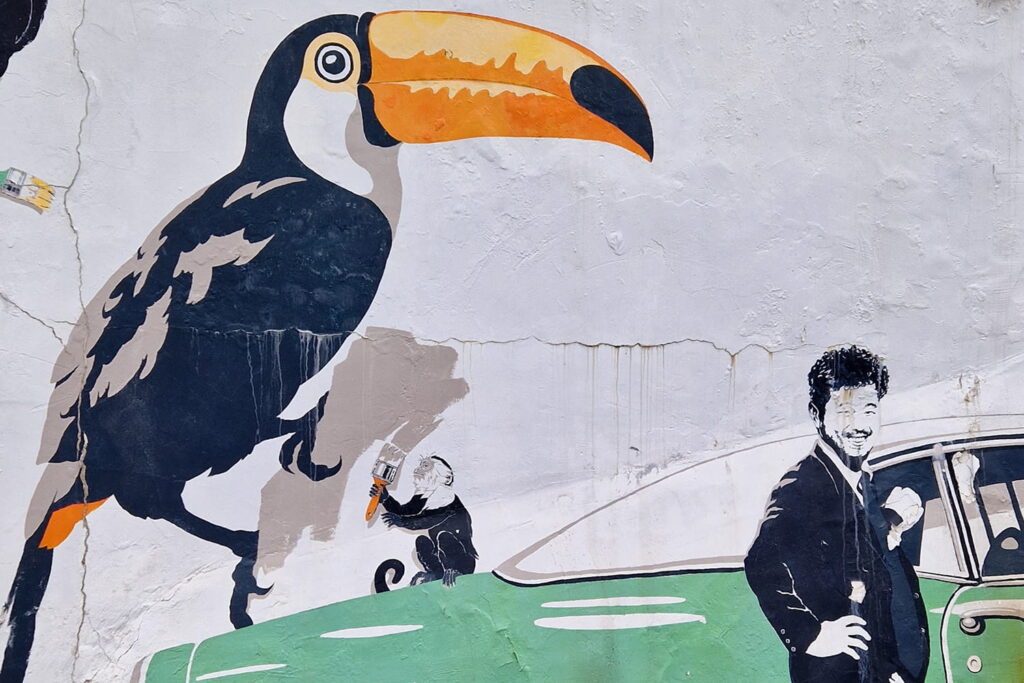
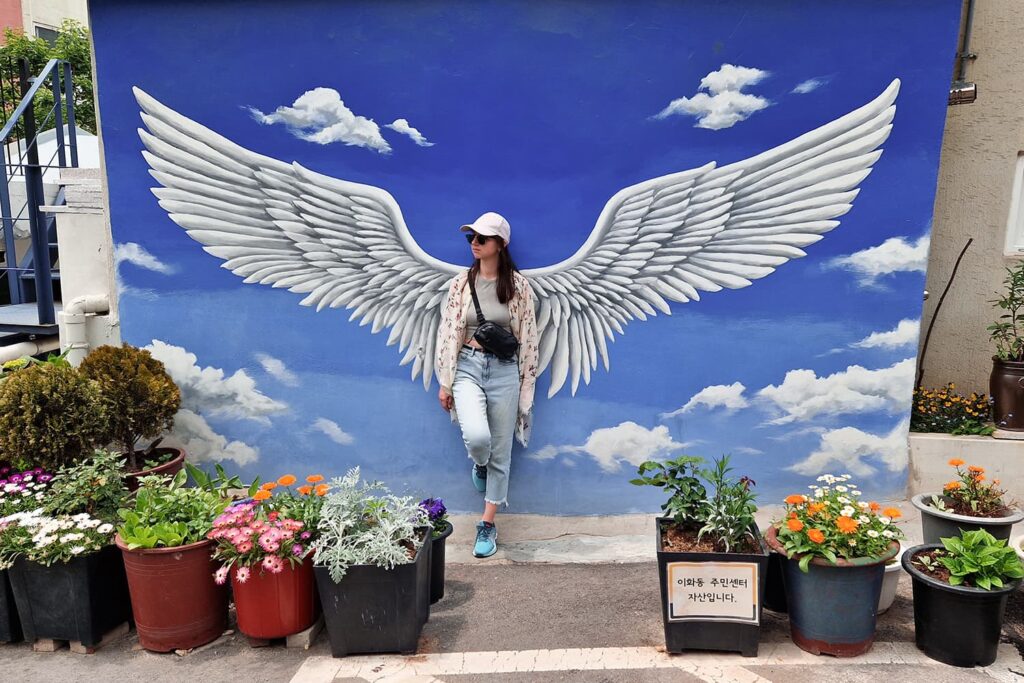
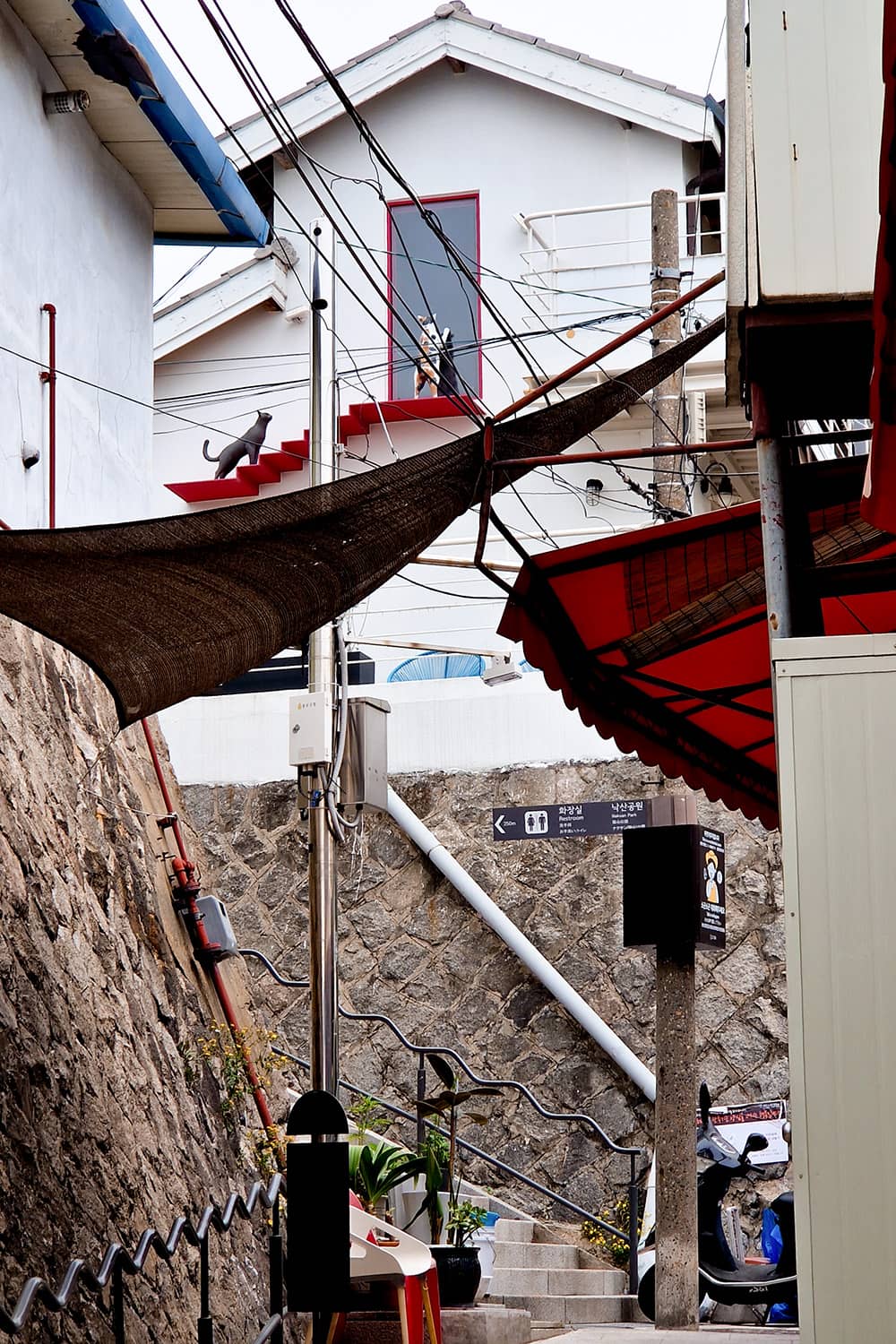
Throughout Korea, you can actually find quite a number of them. For instance, during our time in South Korea, we visited the famous Gamcheon Culture Village in Busan as well as the lesser known Jaman Mural Village in Jeonju (our personal favourite) and the even less-known Dongpirang Mural Village in Tongyeong!
Don’t miss when in Ihwa-dong Mural Village
😇 Wings Mural. Probably the most famous mural. On the opposite side of this mural, you'll find a staircase leading you deeper into the neighbourhood.
🐈 3D cat staircase. A 3D staircase with 3D cats mounted to the wall of a house.
🐦 Toucan Mural. A mural of a toucan surrounded by monkeys and a car.
🚶🏻 Underpass. Here the road makes a loop and passes underneath itself. There are a number of murals in this area, as well as the next item on this list:
☕ Odeoksae Espresso Bar. A lovely café that has great coffee! Open every day from 12 noon to 5 p.m.!
How to get there? The closest metro station is Hyehwa Station (Seoul Metro Line 4). From here you’ll still have to walk 700+ metres to get to Ihwa Mural Village. And, since the latter is located on a hill, they will be uphill. So, be prepared for some exercise😆.
7. Walk the Seoul City Wall Trail in Naksan Park
Since you already did all the work getting up to Ihwa-dong Mural Village, it would be a shame to miss this next free activity, which is located right next to the mural village: Naksan Park and the Seoul City Wall! ‘Seoul City Wall’ are the remnants of the fortification wall, which protected the city during the Joseon Dynasty back when Seoul was still called Hanyang.
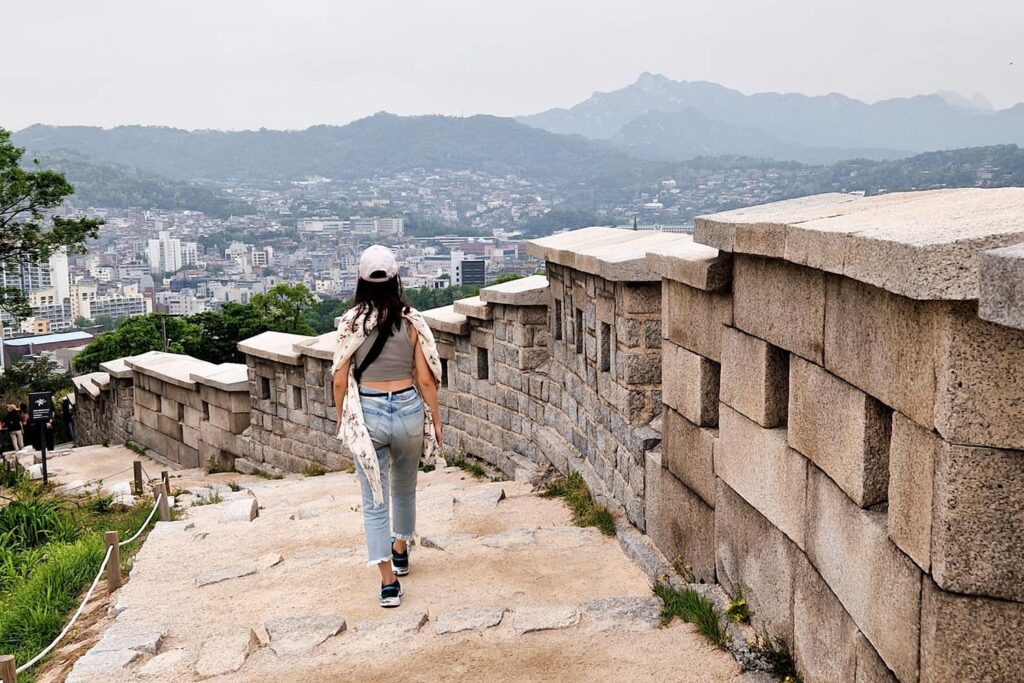
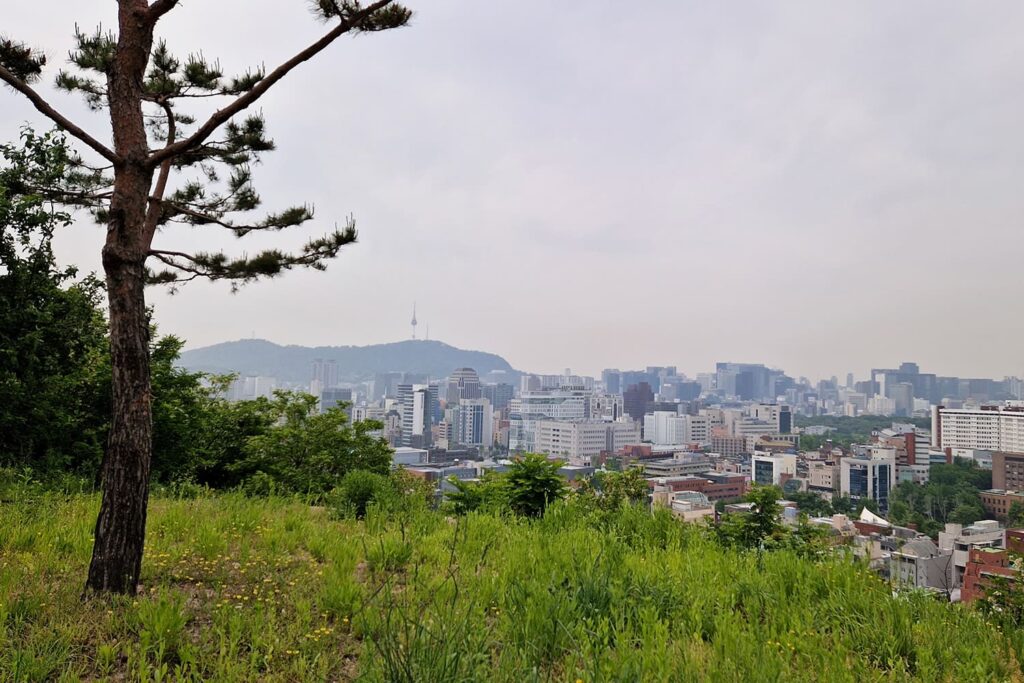
Remnants can still be found in a number of locations throughout the city. However, Naksan Park holds one of the more popular sections, also due to the stunning views you’ll get from Naksan Park over the city skyline. At night the walls of Naksan Park are illuminated which makes for quite a lovely atmosphere.
How to get there? The closest metro station is, again, Hyehwa Station (Seoul Metro Line 4). From here you’ll have to walk quite a bit uphill until you reach the park. If you are visiting Ihwa-dong Mural Village, then Naksan Park is located right next to it.
8. Explore DDP – Dongdaemun Design Plaza
Dongdaemun Design Plaza (or DDP) is a cultural complex that regularly hosts exhibitions, fashion shows and a variety of other cultural events. What draws tourists to this complex is mainly its intriguing architecture and interesting design. Stroll around Dongdaemun History & Culture Park as well as the DDP building. You can even enter the DDP building as well as a few of its exhibitions for free. A program can be found here.
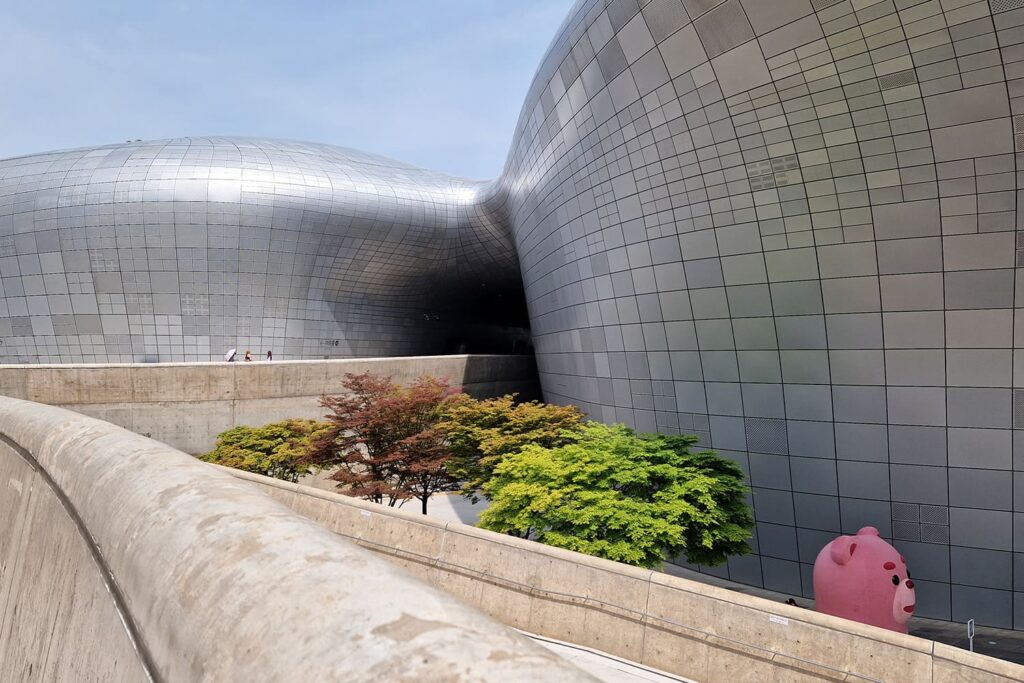
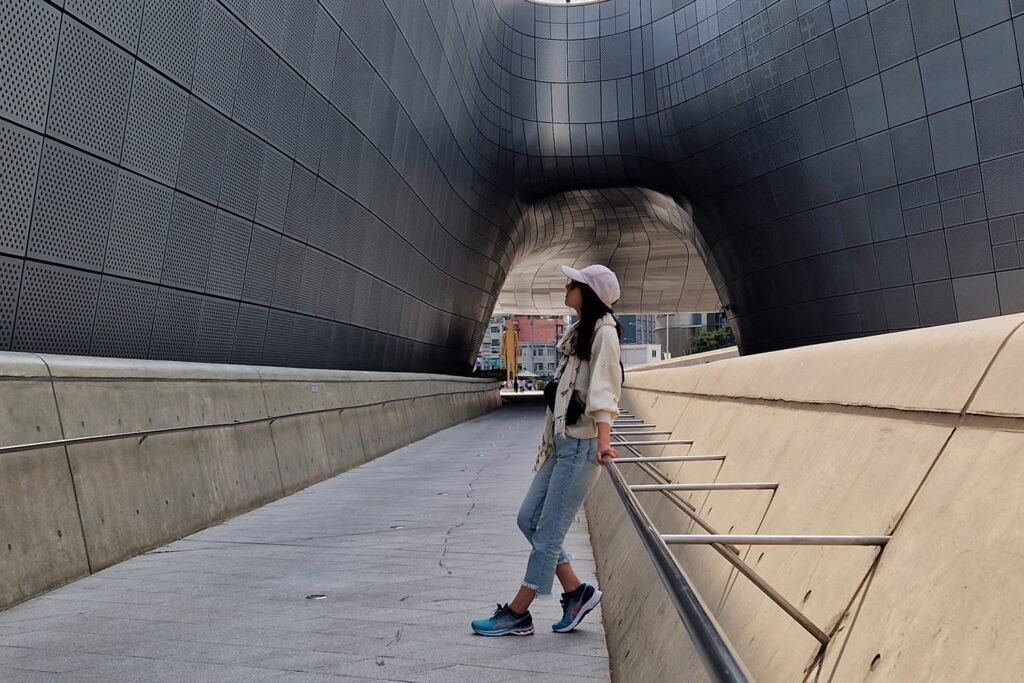
Note: In case you are struggling to find souvenirs (i.e. magnets of South Korea) or need to do some last-minute souvenir shopping in Seoul, there is a shopping centre opposite of DDP where you can find a huge variety of souvenirs! Click here for more information.
How to get there? DDP has its own metro station: Dongdaemun History & Culture Park Station (Seoul Metro Line 2, 4 & 5), so getting here is fairly straightforward.
9. Walk alongside the Cheonggyecheon Stream
If you regularly watch K-drama, then it’s quite probable that you have seen Cheonggyecheon Stream on more than one occasion and know exactly what it is. If not, let us explain. Cheonggyecheon Stream is a 10 kilometres long stream that runs from west to east through the heart of Seoul. It is famous for its walkways that run alongside both shores of the stream as well as the occasional art display.
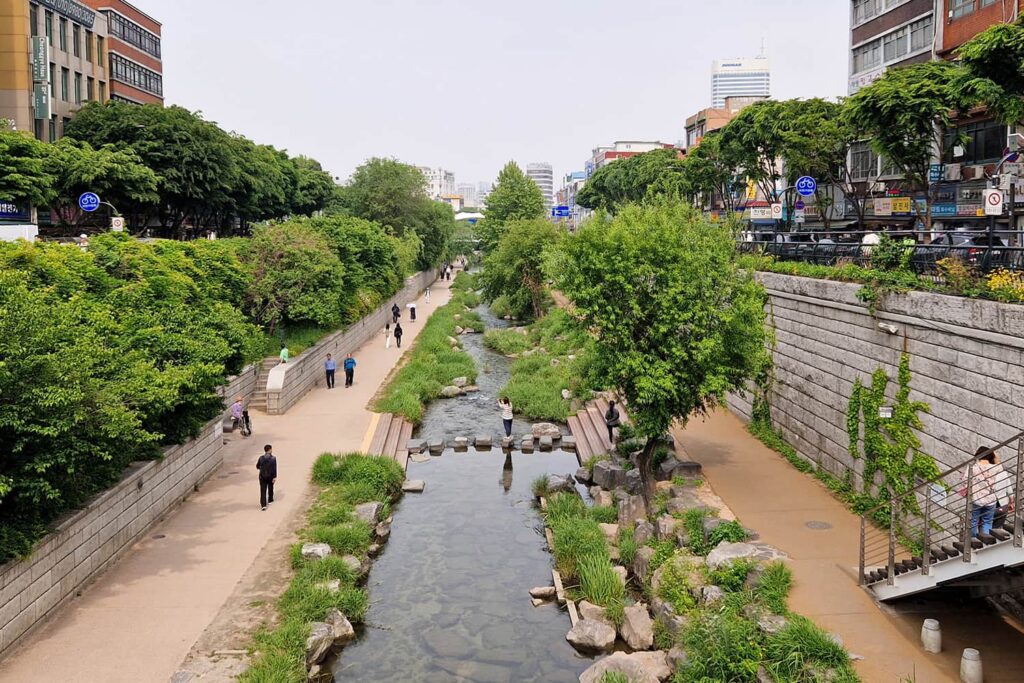
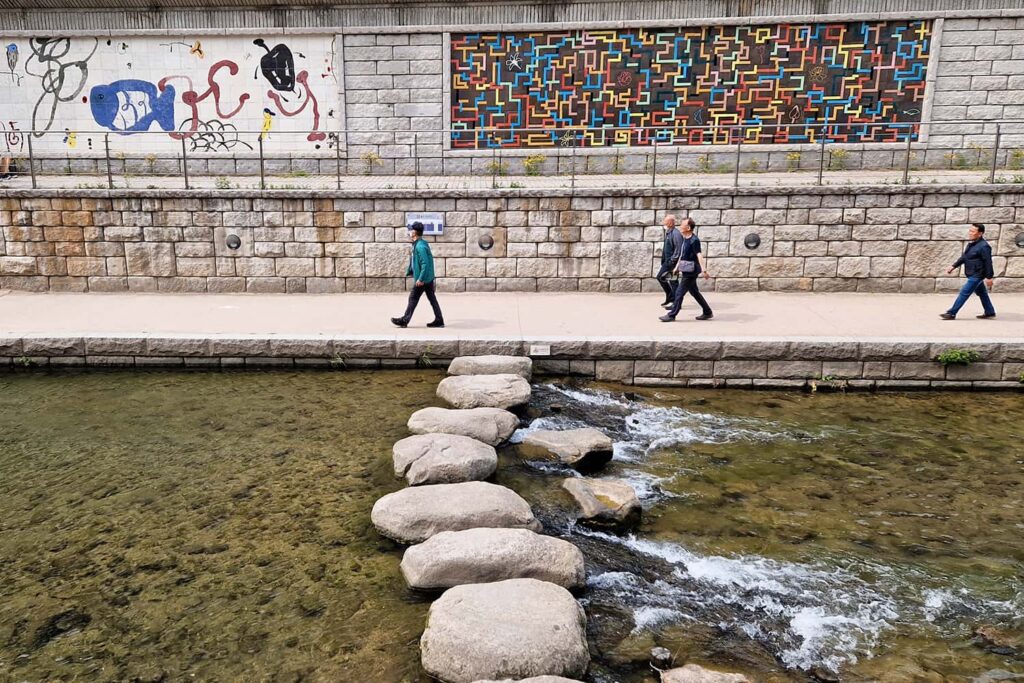
The stream actually already starts near Gwanghwamun Square, but also flows past Dongdaemun area which makes it the perfect next activity after spending some time at DDP. Personally, we would recommend starting in Dongdaemun and then walking back west towards Gwanghwamun. You don’t have to walk all the way there, but if you wish to so – it’s about a 3km leisurely walk alongside the stream.
How to get there? The closest metro station to the Dongdaemun area is Dongdaemun Station (Seoul Metro Line 1 & 4) Exit 7 or 8. The one closest to the beginning of the stream near Gwanghwamun is Gwanghwamun Station (Seoul Metro Line 5) Exit 5.
10. Take a picture with the famous Gangnam Style Sculpture
Moving on, we are headed to the southern side of the Han River in Seoul: to Gangnam area! Gangnam became quite famous when PSY released his song ‘Gangnam Style’, which went viral all over the world. A sculpture showcasing two hands, which are reminiscent of the iconic dance that accompanies the song, was built in front of the COEX Mall and has since become a beloved attraction.
How to get there? The closest metro station is Bongeunsa Station (Seoul Metro Line 9) Exit 7.
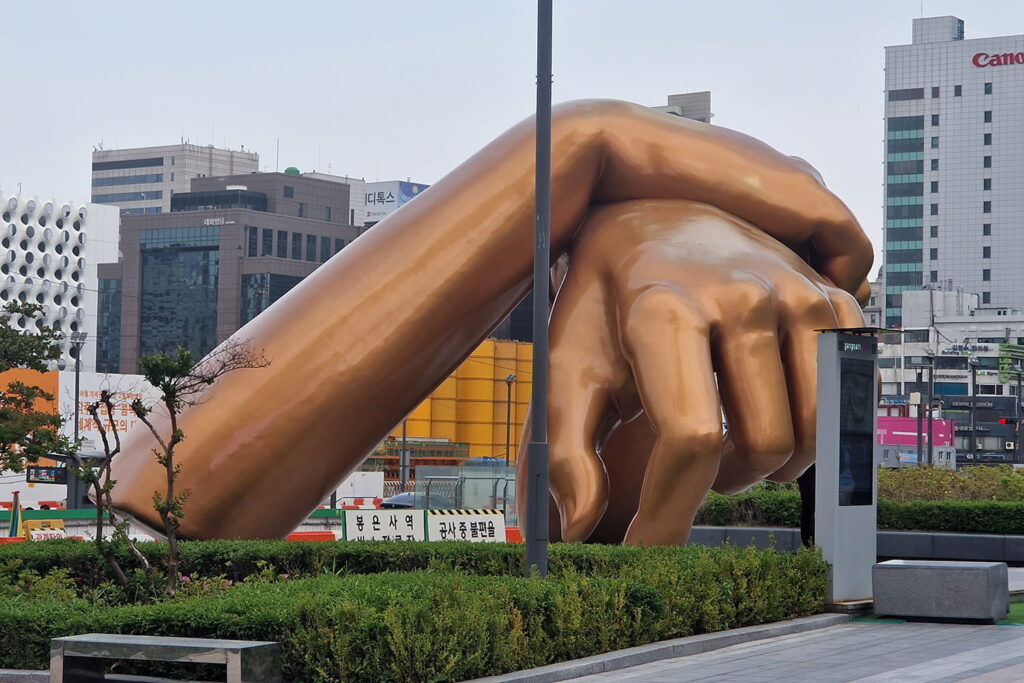
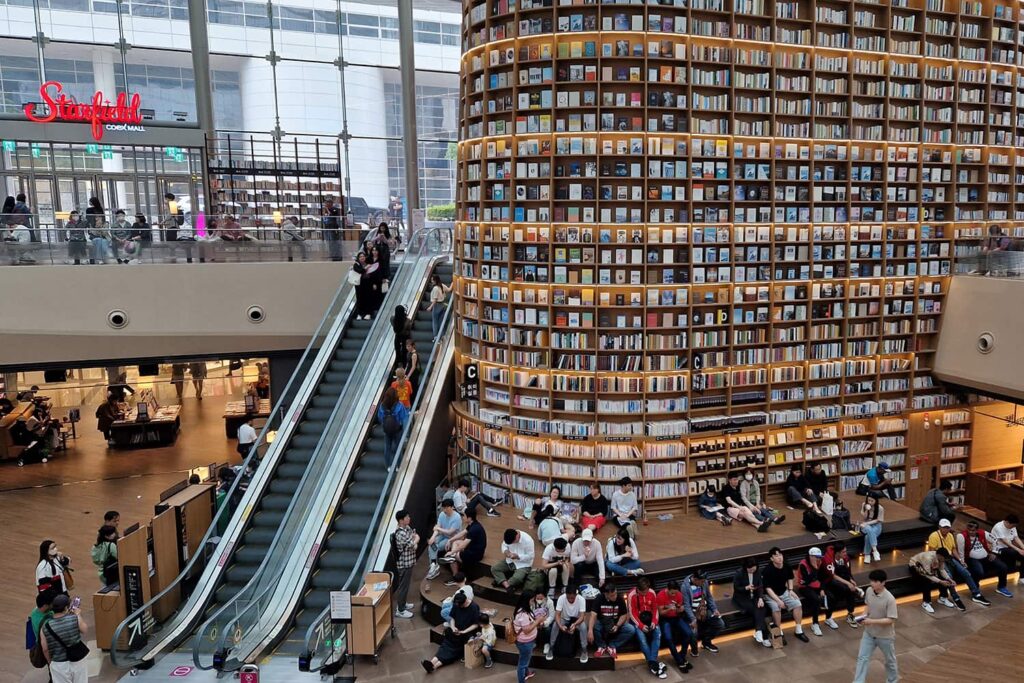
11. Ride the escalator at Starfield Library
Starfield Library is part of the same COEX Mall Complex and thus you can easily visit the Library and Gangnam Style sculpture in one go. Starfield Library became rather famous due to its interesting layout and design, especially on social media. The popular thing to do is to take a picture on the escalator with the stunning book feature wall in the background!
How to get there? Again, the closest metro station is Bongeunsa Station (Seoul Metro Line 9) Exit 7.
12. Visit Bongeunsa one of Seoul’s most stunning Buddhist Temples
Bongeunsa Buddhist Temple was founded in the 8th century, although first at another location. It wasn’t until later that the temple was transferred to its current site. Personally, we think this temple is one of the more stunning ones in Seoul. It is located on a small hill. When exploring Bongeunsa Temple, you start at the bottom and work your way up. Along the way you’ll come across a number of different halls, also do not miss Guanyin Statue!
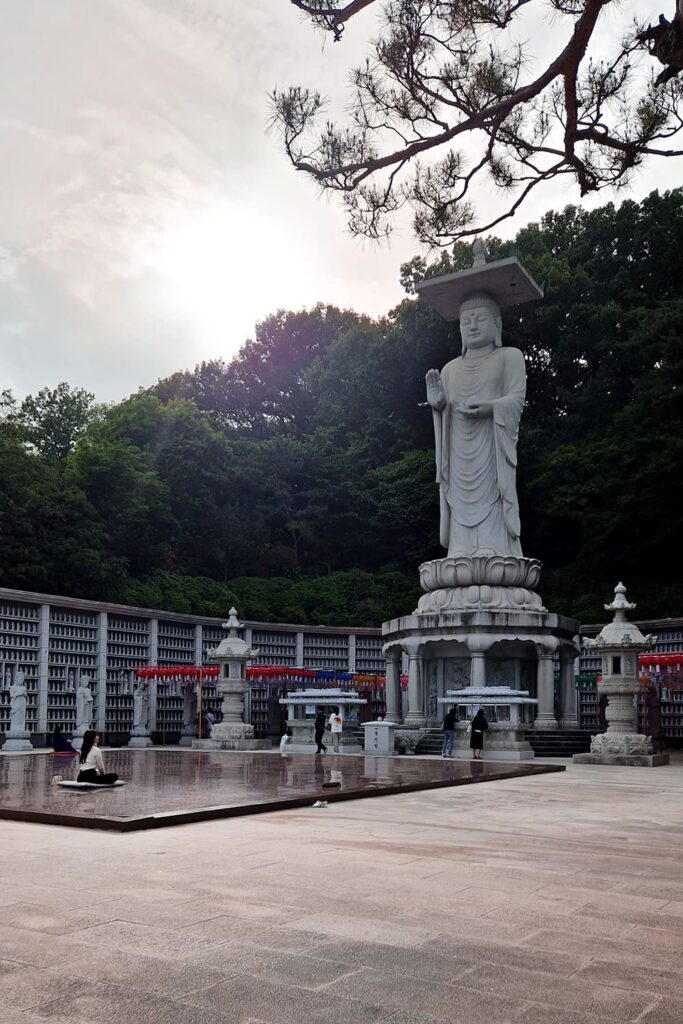
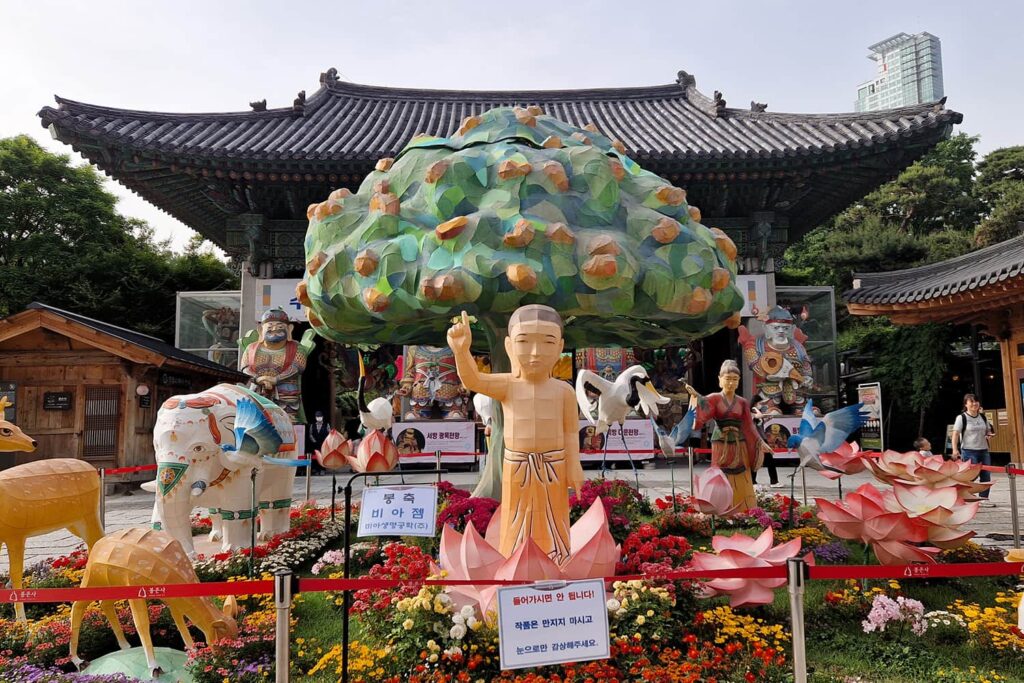
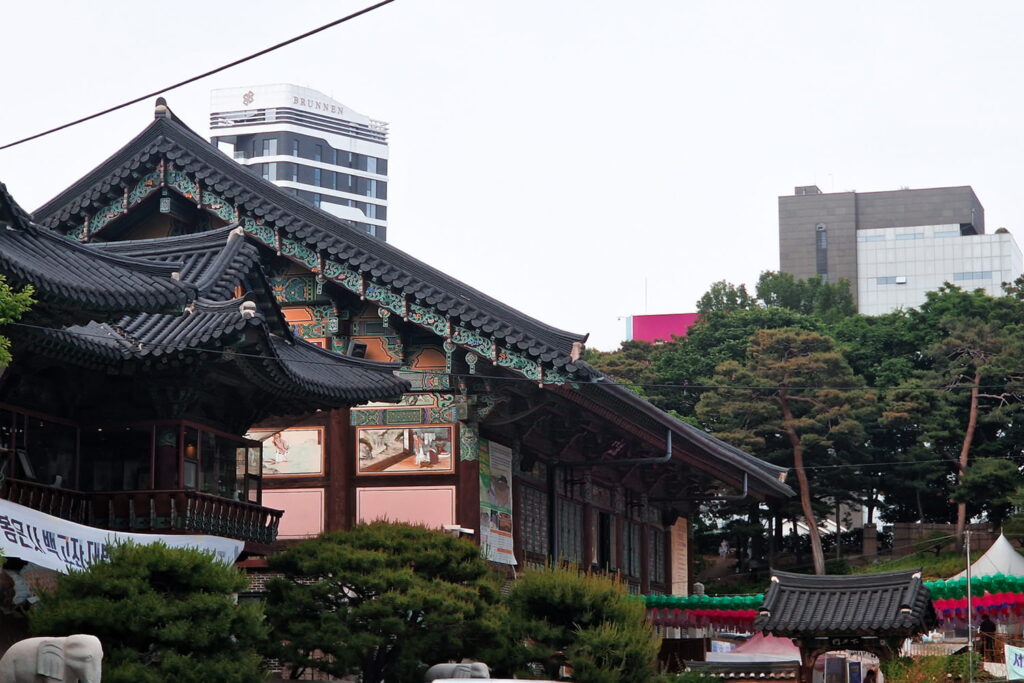
Good to know: Same as Jogyesa Temple, Bongeunsa Temple is also part of the Temple Stay Program. This cultural program allows tourists to stay at a selection of temples throughout Korea and experience the daily life of Korean monks.
How to get there? The closest metro station is Bongeunsa Station (Seoul Metro Line 9) Exit 2.
13. Explore Seoul’s Underground Shopping Malls
A lot of Seoul’s bigger metro stations are home to the odd food stall or shop. However, there are a few locations where you’ll essentially find a whole underground shopping mall. Most shops sell no-name brands, however this also means that pricing is done accordingly. For clothing and accessories we would recommend going to Gotomall. Alternatively, you can also check out the one in Myeong-dong.
How to get there? Myeong-dong Underground Shopping Mall is inside, you guessed it, Myeong-dong Station (Seoul Metro Line 4). Gotomall can be found near Express Bus Terminal Station (Seoul Metro Line 3, 7 & 9).
14. Marvel at the Han River from Hangang Park
The Han River is the main river that flows through Seoul and eventually into the Yellow Sea. Along its banks, you’ll find that quite a huge area has been turned into a park: Hangang Park. Among Koreans, Hangang Park is actually a quite beloved landmark and many come here, be it during the day or at night, for a variety of activities.
What to do in Hangang Park
🚶🏻 Take a walk. Walk one of the many paths inside Hangang Park.
🚲 Rent a bicycle. During the day a great way to explore Hangang Park is to rent a bicycle (~3.000KRW/hour) and ride along the Han river.
🧺 Do a picnic. In the evenings, many Koreans gather at various locations of Hangang Park to do a picnic. There is a whole infrastructure around this activity, i.e. you can rent tents, blankets and even small tables, order food (there are designated delivery zones for pick-up) or cook your own convenience store ramyeon at the picnic site. By far the most common picnic foods are fried chicken and ramyeon. Popular sites are e.g. Banpo and Yeouido.
⛲ Banpo Bridge Rainbow Fountain. Every night from April - October, there is a fountain/light show on Banpo Bridge. The show lasts about 20 minutes and takes place a number of times between 19:30-21:00.
How to get there? The closest metro station to Banpo Hangang Park is Express Bus Terminal Station (Seoul Metro Line 3, 7 & 9), from here you’ll have to walk ~1.4 kilometres towards the park. Yeouido Hangang Park is easier to reach. There is a metro station, Yeouinaru Station (Seoul Metro Line 5), that stops right under the park.
15. Watch Street Performances in Hongdae
It is time to head back to the northern side of the Han River, to an area called Hongdae. The latter is quite a fun and artistic neighbourhood in Seoul. It is located right next to Hongik University, which is also what gave the area its name. Hongdae is famous for being a quirky shopping area, its nightlife as well as for being a prime spot for indie musicians, street performers and live music festivals. Stroll around the busy streets of Hongdae and soak in the atmosphere of this interesting neighbourhood!
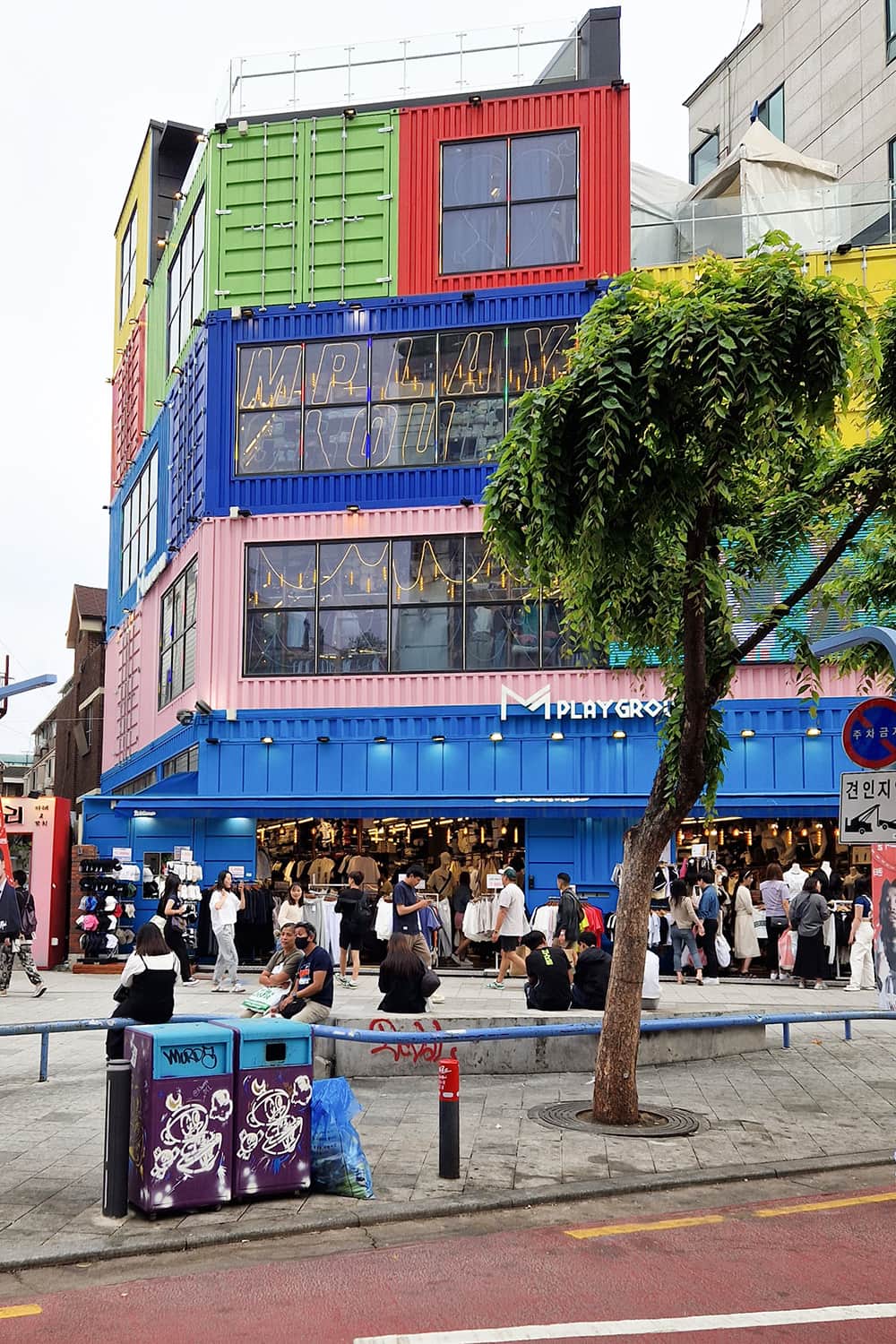
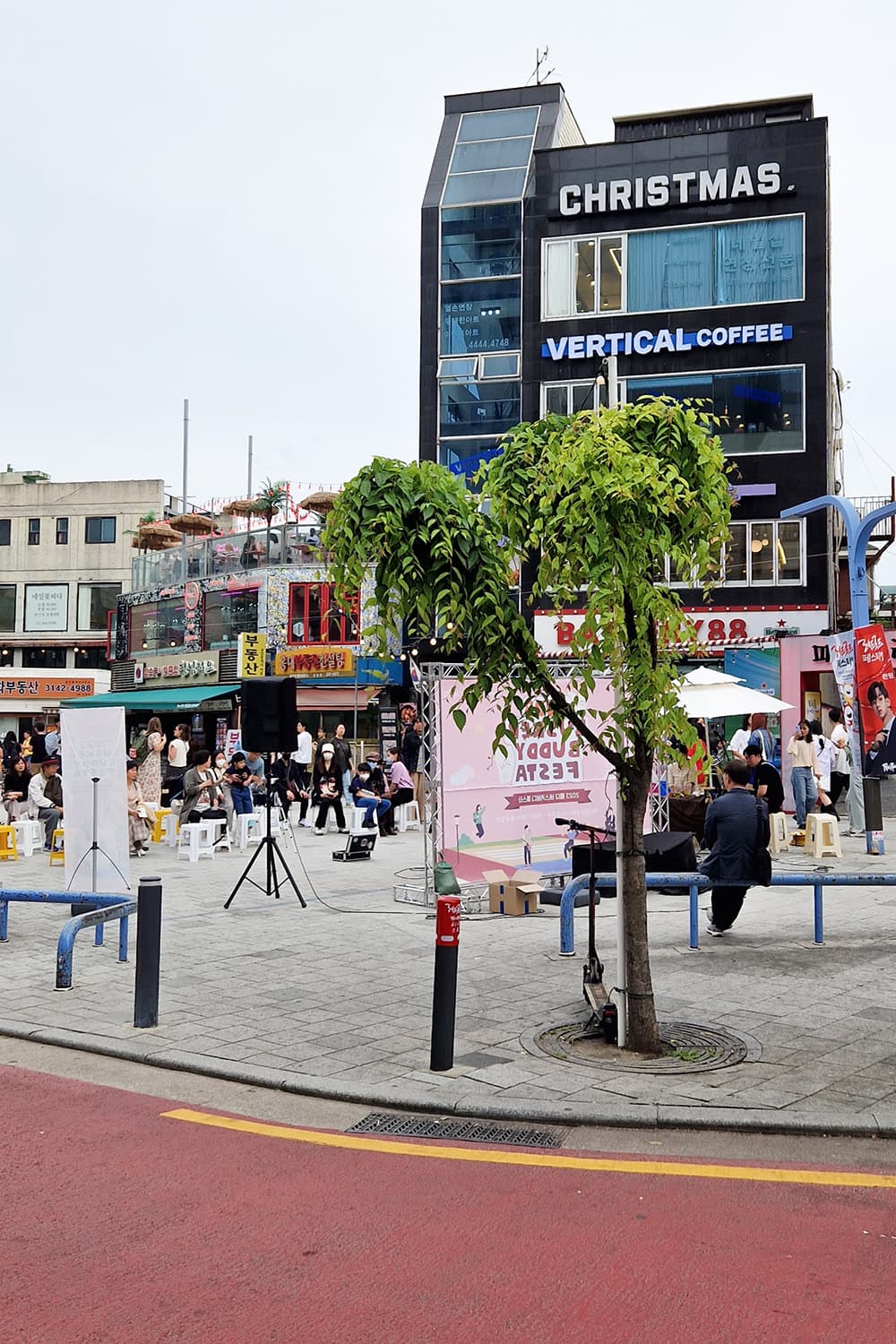
How to get there? The closest metro station is Hongik Univ. Station (Seoul Metro Line 2). Note: The AREX (Airport Railroad Exress) also stops here.
16. Get the best view of Seoul from Namsan Mountain at sunset
Now, this is probably one of our favourite free things to do in all of Seoul: awesome sunset and night-time views of the city! Namsan Mountain is most well-known for being the location of the N Seoul Tower*. The latter is of course not free of charge. However, it doesn’t have to be. Because honestly, the views you can get even just from the base of the tower are absolutely spectacular!
At the top of Namsan Mountain, you’ll find the ‘Love Locks of Namsan Tower’, essentially a walkway lined with thousands of love locks, a pavilion as well as a number of small viewing platforms. There are also a few restaurants here, but honestly they are quite expensive and let’s say, from personal experience, you’ll probably find better options elsewhere😆.
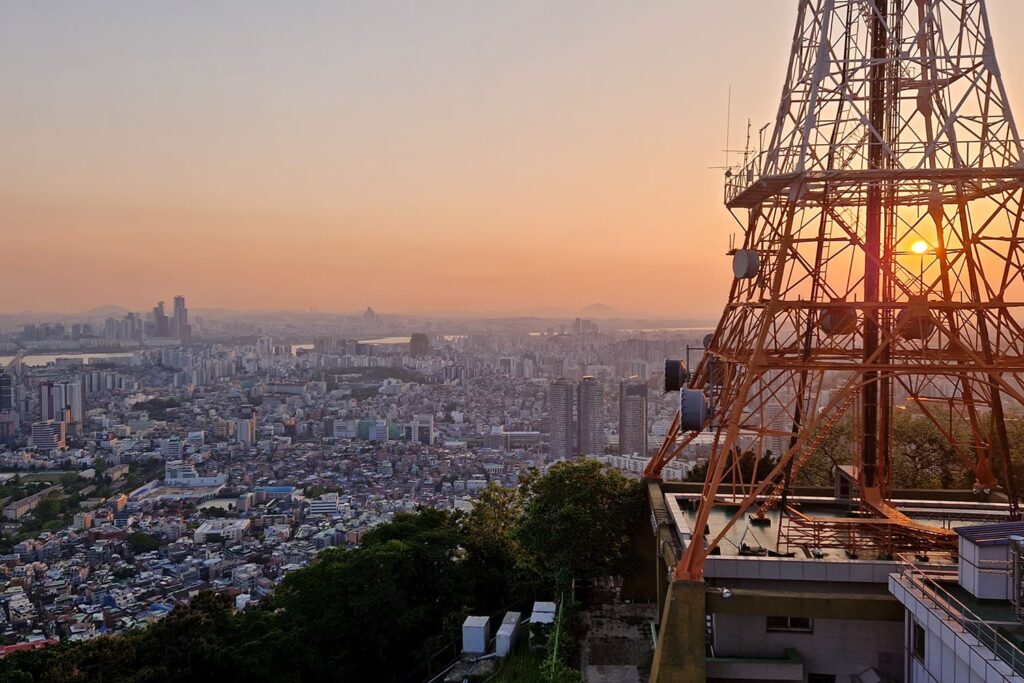
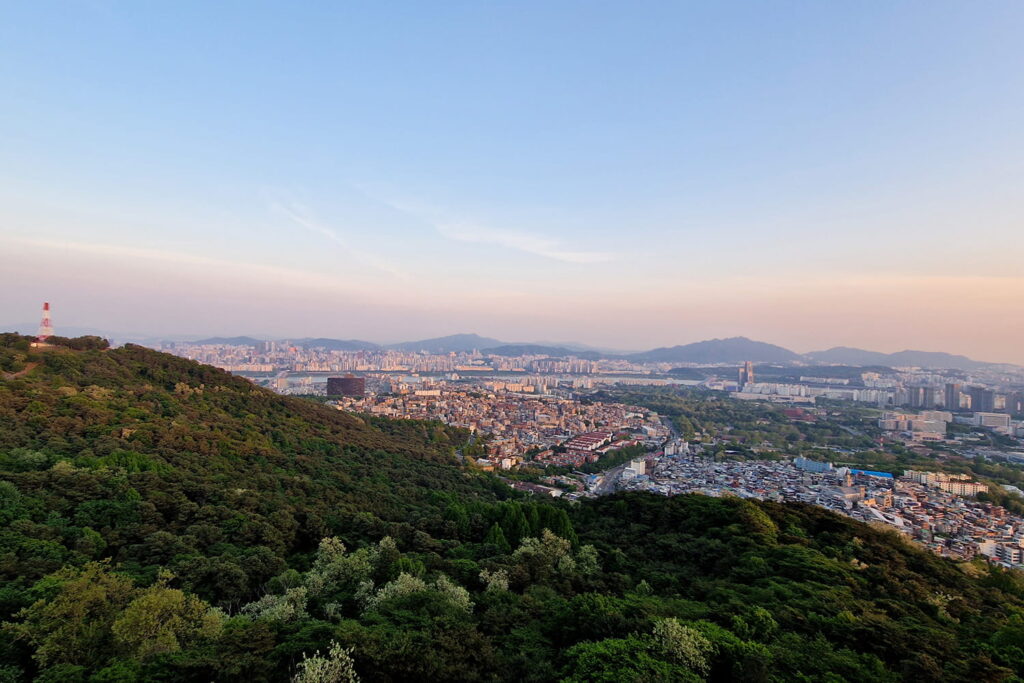
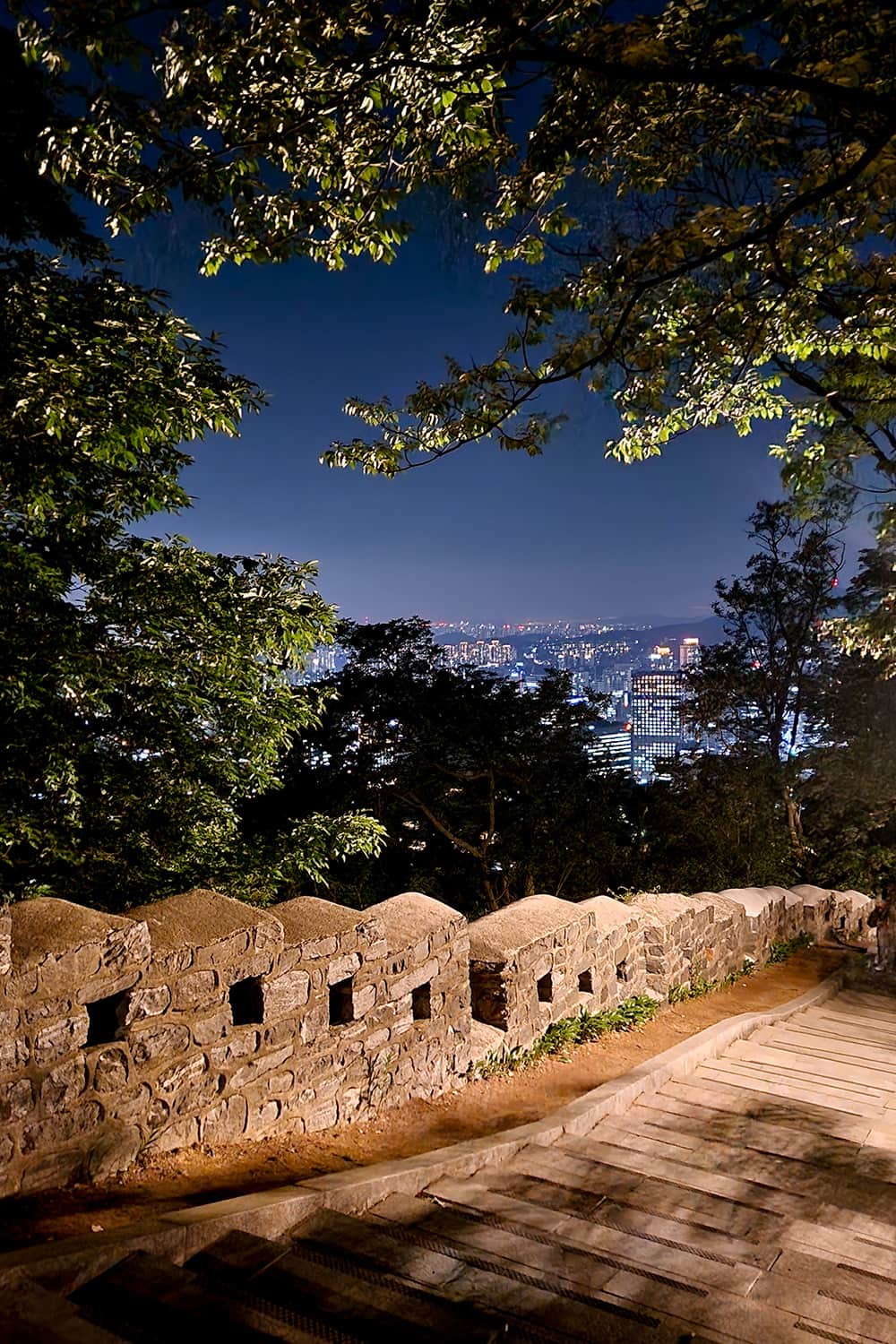
How to get to the top of Namsan Mountain
Truth be told, there is no one and only right way to get there, there are a number of different options. If you wish to hike:
- We recommend getting there via Chungmuro Station (Seoul Metro Line 3 & 4) Exit 3 or 4, head through Namsangol Hanok Village & Park (free of charge), take the overpass, follow the path until you reach Namsangongwon-gil, then follow the latter uphill until you reach the top.
- Another option is getting there via Hoehyeon Station (Seoul Metro Line 4) Exit 3 or 4, head to Baekbeom Park (you’ll find remnants of the Seoul City Wall here, great photo spot actually!), a short stretch alongside Sopa-ro Road until you reach a staircase that will lead you up the mountain past Jamdubong Photo Island. This path is quite stair-heavy, however it is shorter in distance. We took this path when coming down the mountain and recommend you do too!
Our Tip: Maps.me is the best free app to navigate while hiking since it features most trails, paths and staircases quite accurately. We therefore recommend downloading it before hiking up Namsan Mountain. Trust us, you’ll have a way easier time finding your way😆.
Alternatively, there is also a cable car going up the mountain, get here from Myeong-dong Station (Seoul Metro Line 4) Exit 3. The streets leading to the cable car are quite steep too.
The most effortless way to get to top is probably by bus. At Chungmuro Station (Seoul Metro Line 3 & 4) near Exit 2, you can catch a bus (Nr. 01B) that will drive you all the way up to the top of Namsan Mountain!
17. Eat your way through Myeong-dong Night Market
Each night from 5 p.m. to 1 a.m., the streets of Myeong-dong area are filled with numerous stalls selling all sorts of street food. Although this experience may be a little more on the touristy side, it is good fun strolling around the streets of Myeong-dong and trying out various dishes! If you are not a fan of big crowds, we would recommend getting here earlier rather than later. As the evening goes on, the streets tend to get rather packed.
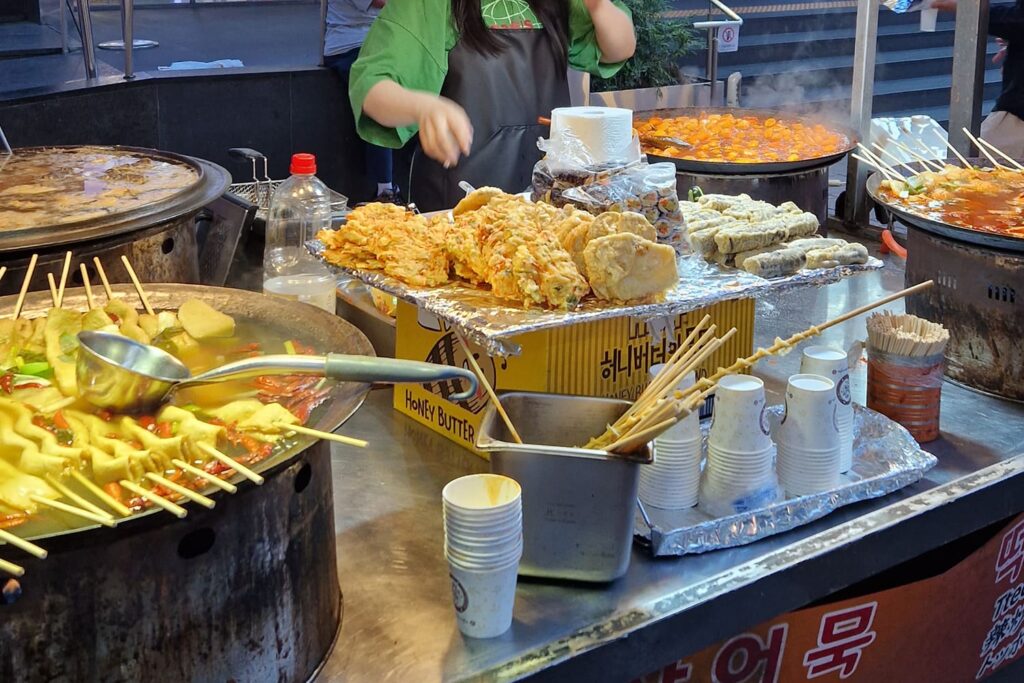
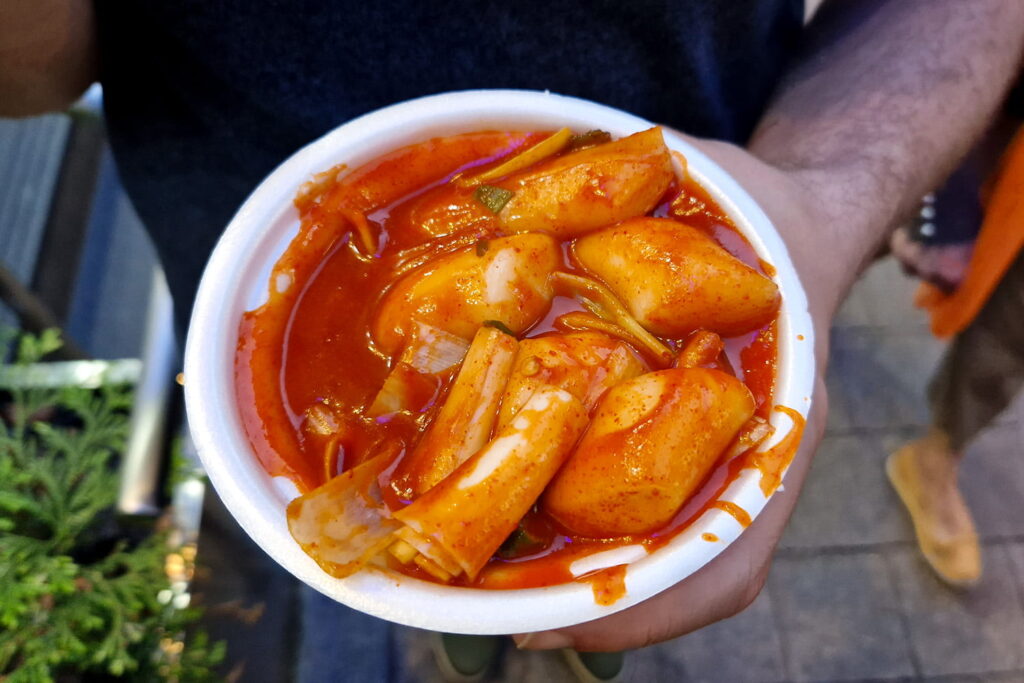
How to get there? The closest metro station is Myeong-dong Station (Seoul Metro Line 4).
18. Visit the Korean National Museum
The Korean National Museum is the country’s most popular as well as largest museum. It houses six extensive permanent collections surrounding Korean history and art. Among the exhibitions, a number of Korean national treasures are featured as well.
How to get there? The closest metro station is Ichon Station (Seoul Metro Line 4) Exit 2.
19. Visit the War Memorial of Korea
The war memorial of Korea is a museum that opened in 1994 on the former army headquarters site. It focusses on the Korean War and exhibits a variety of artifacts in indoor as well as outdoor exhibitions.
How to get there? The closest metro station is Samgakji Station (Seoul Metro Line 4 & 6) Exit 11 or 12.
20. Go Hiking in Bukhansan National Park
Bukhansan National Park is famous for its hikes that wind through stunning mountains and rock formations while at the same time providing awesome views over Seoul! The national park is actually located just north of Seoul and therefore a great way to escape the city without having to travel very far.
How to get there? There are several entrances to Bukhansan NP, which can easily be reached from Seoul via local bus or even subway. Which one is best will depend on the hike of your choice.
21. Bonus: Rent a Hanbok and get free access to Seoul’s Palaces
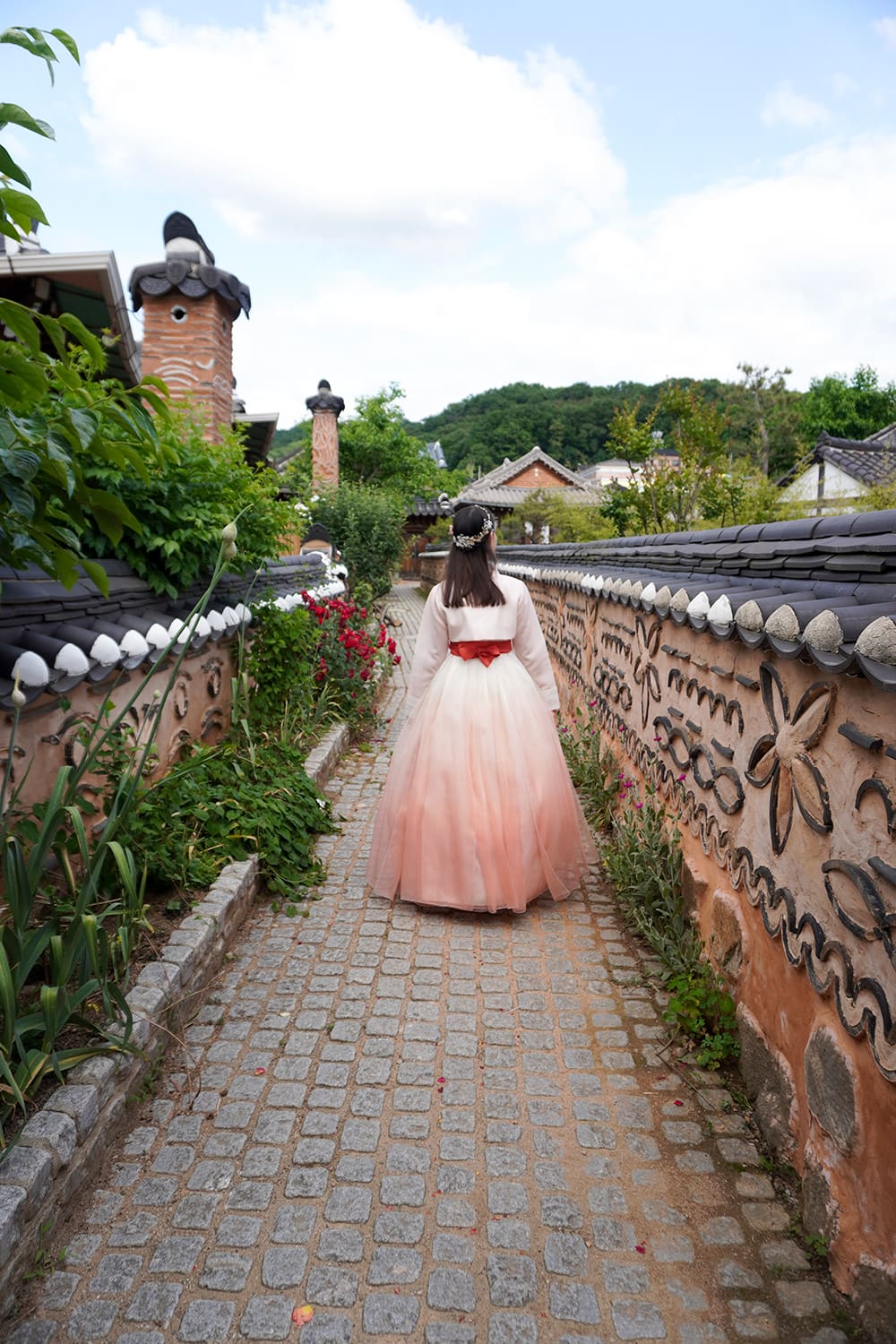
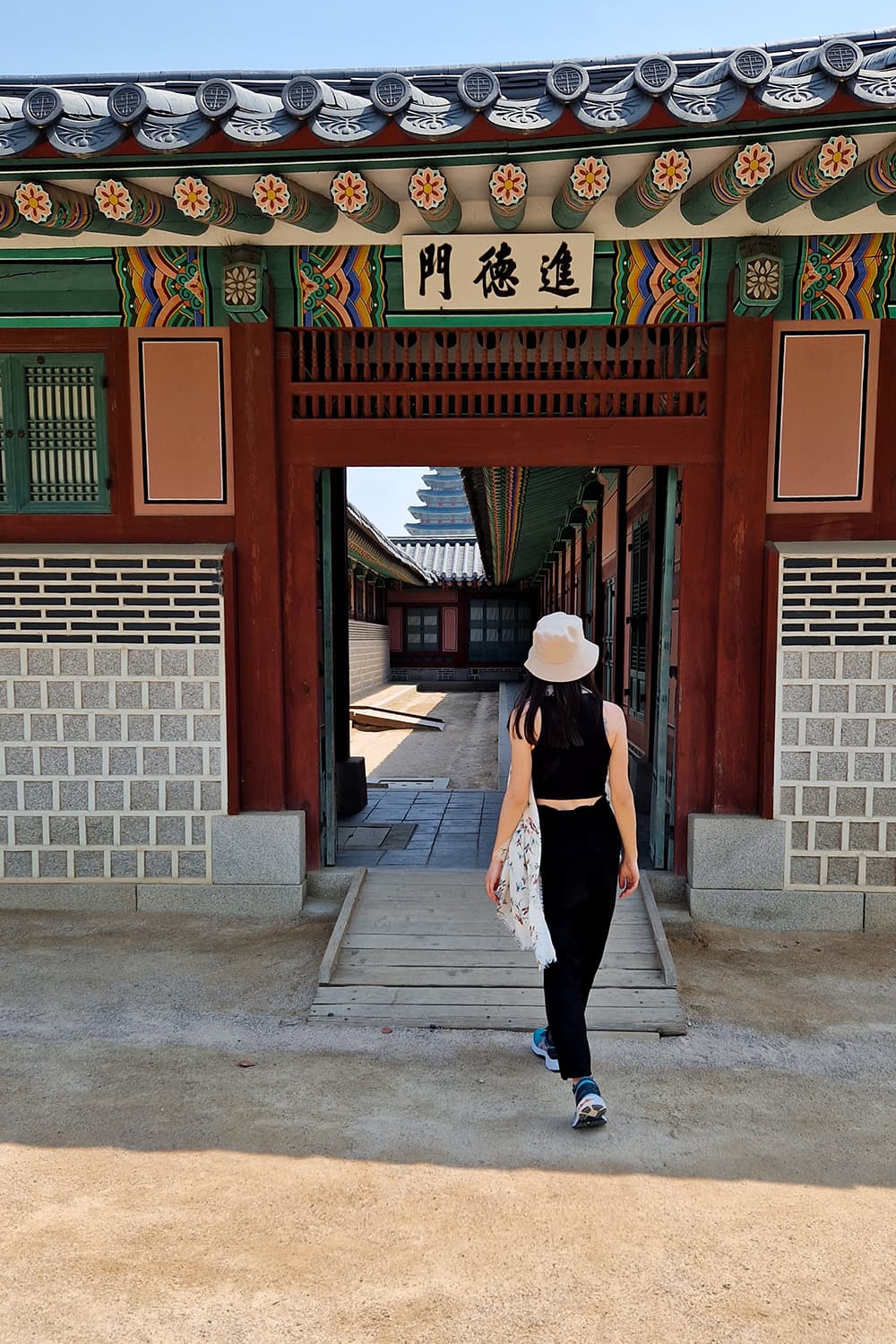
The fact that you can access Seoul’s Palaces for free when wearing a Hanbok is probably one of the most popular travel hacks you’ll come across when reading anything related to sightseeing in Seoul. Which is why we wanted to include it in this guide as well.
However, we decided not to put it among the actual 20 free activities, because truth be told, paying to rent a Hanbok is quite likely more expensive than paying for the ticket to enter the palace outright😆. So we would not necessarily advise you to rent a Hanbok in order to get free access to the palaces.
On the other hand, if it is your goal to rent and wear a Hanbok for a few hours, then it is a great added bonus that you’ll get to do it in as marvellous a setting as e.g. Gyeongbokgung or Changdeokgung Palace for free!

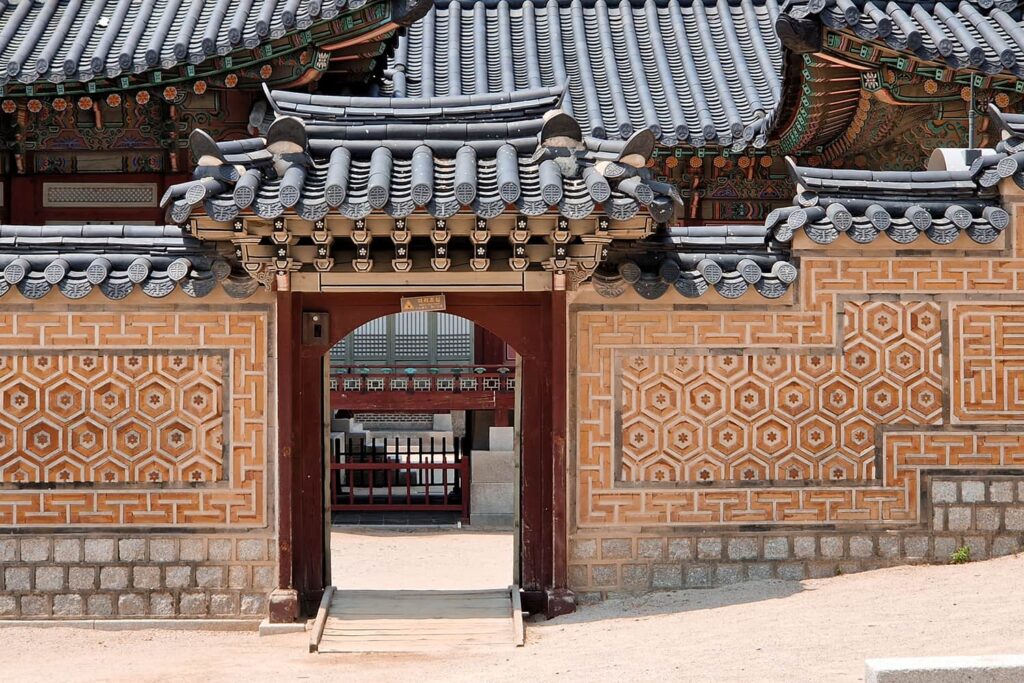
Free Things to do in Seoul – Final Thoughts
This concludes our sightseeing guide to Seoul, where we showed you 20 awesome free things to do while in the city! And, we wager that by now you agree that Seoul has a pretty decent selection when it comes to free activities!
Of course, nothing is ever completely for free. You will still have to pay expenses related to transportation in order to even get to these places. Also, if you wish to eat something at e.g. Myeong-dong night market or grab a coffee in Bukchon Hanok Village, these will cost too. However, you’ll have to eat anyway. So plan in a way where that coffee coincides with your morning coffee and the night market dishes or Hangang Park picnic with your dinner.
Travelling South Korea on a stricter budget? Find our best budget tips down below:
Let us know if there are other activities that you think should be included in this list! Save this post for later use if your trip isn’t for another while. And, last but not least: Safe and happy travels!🍀
